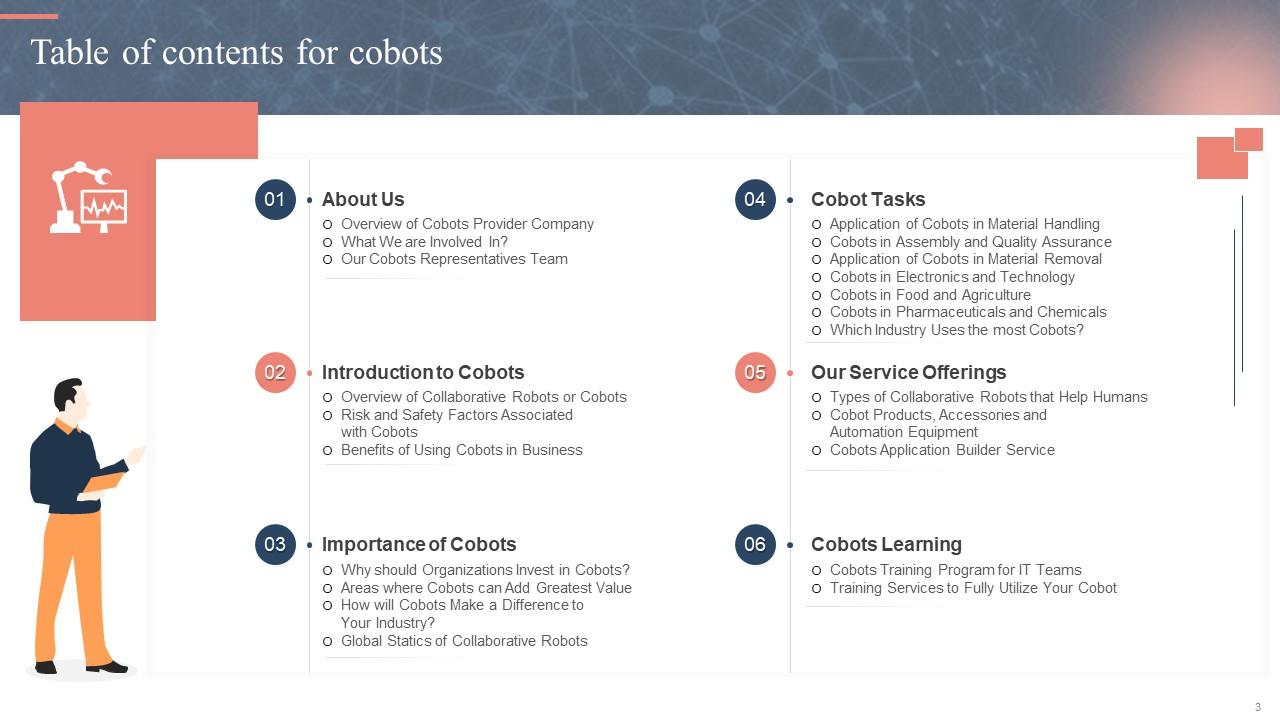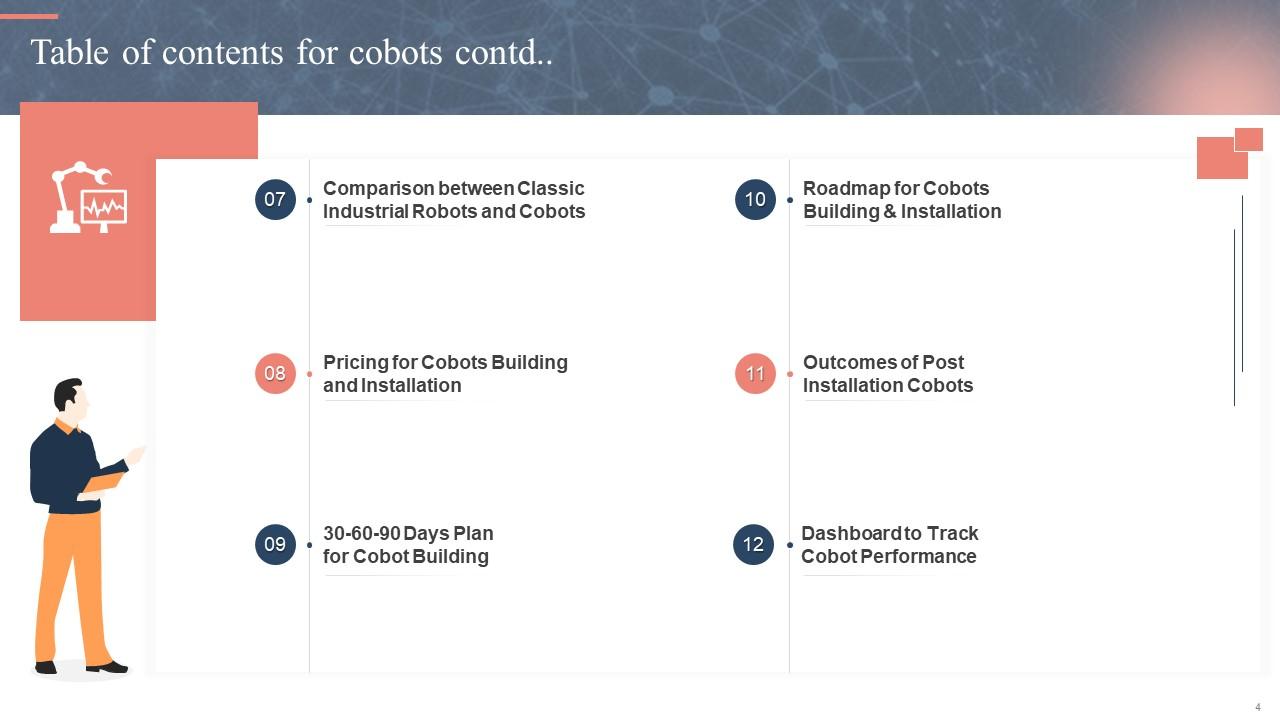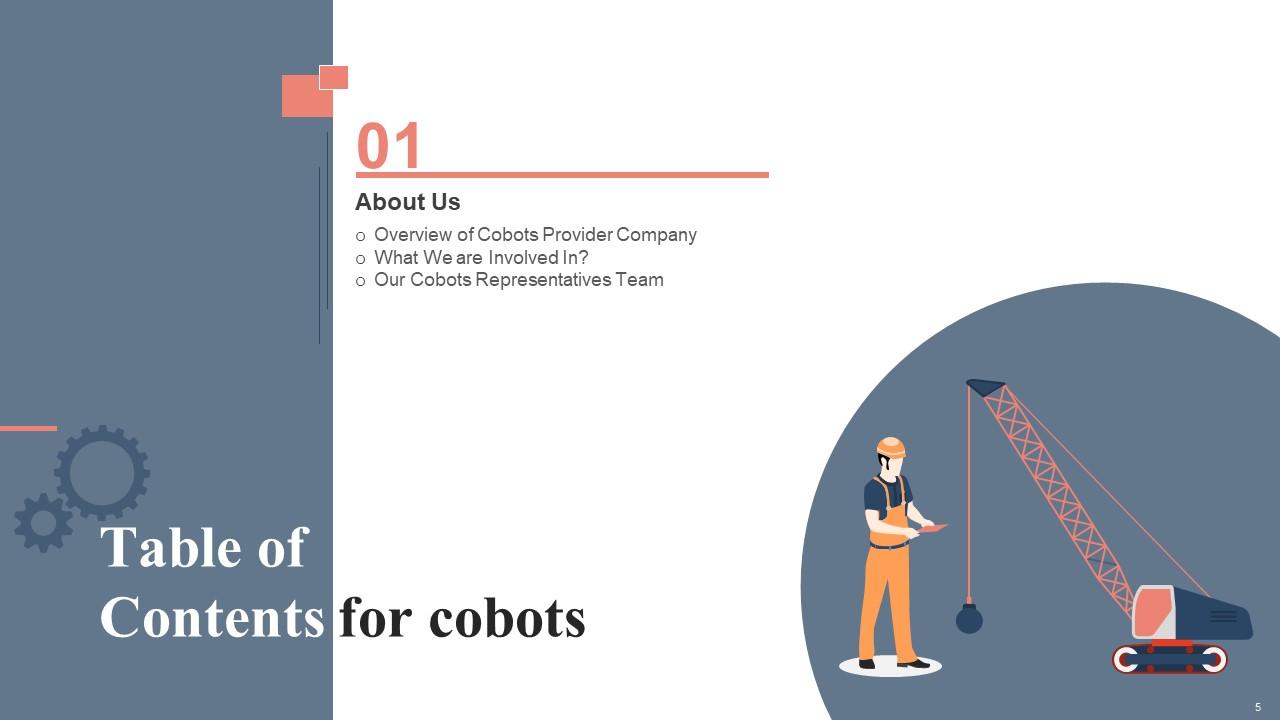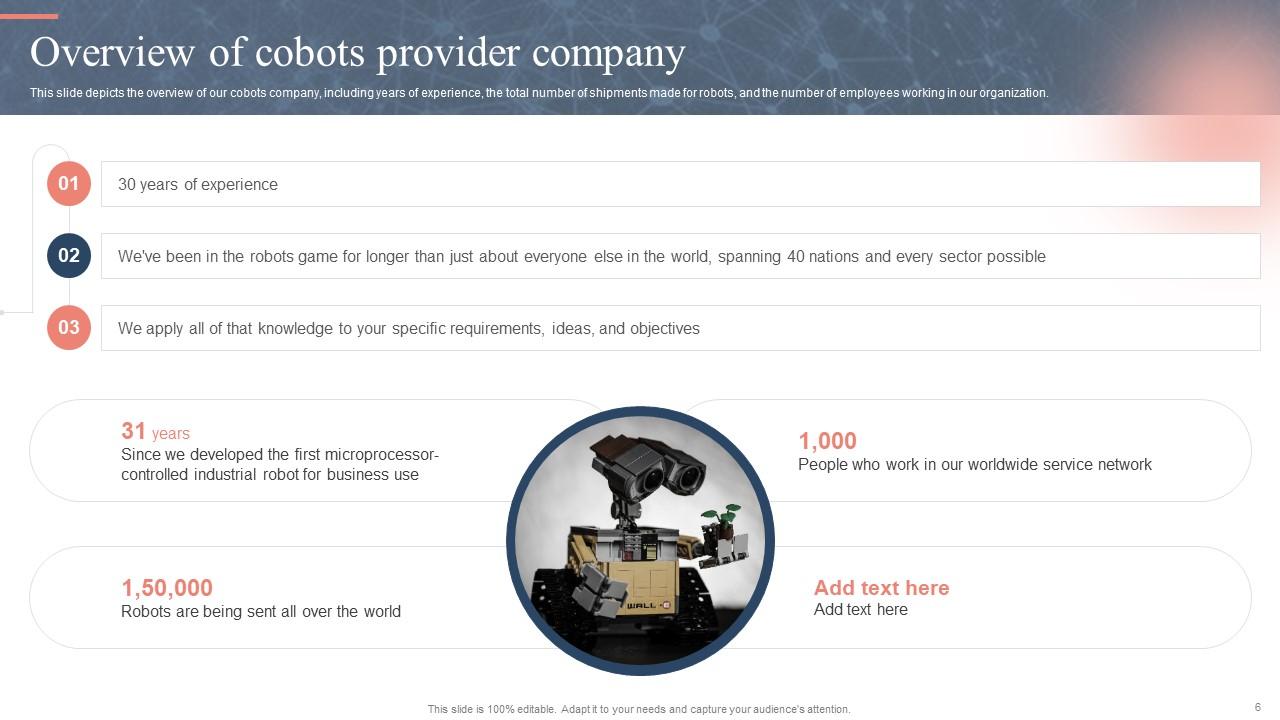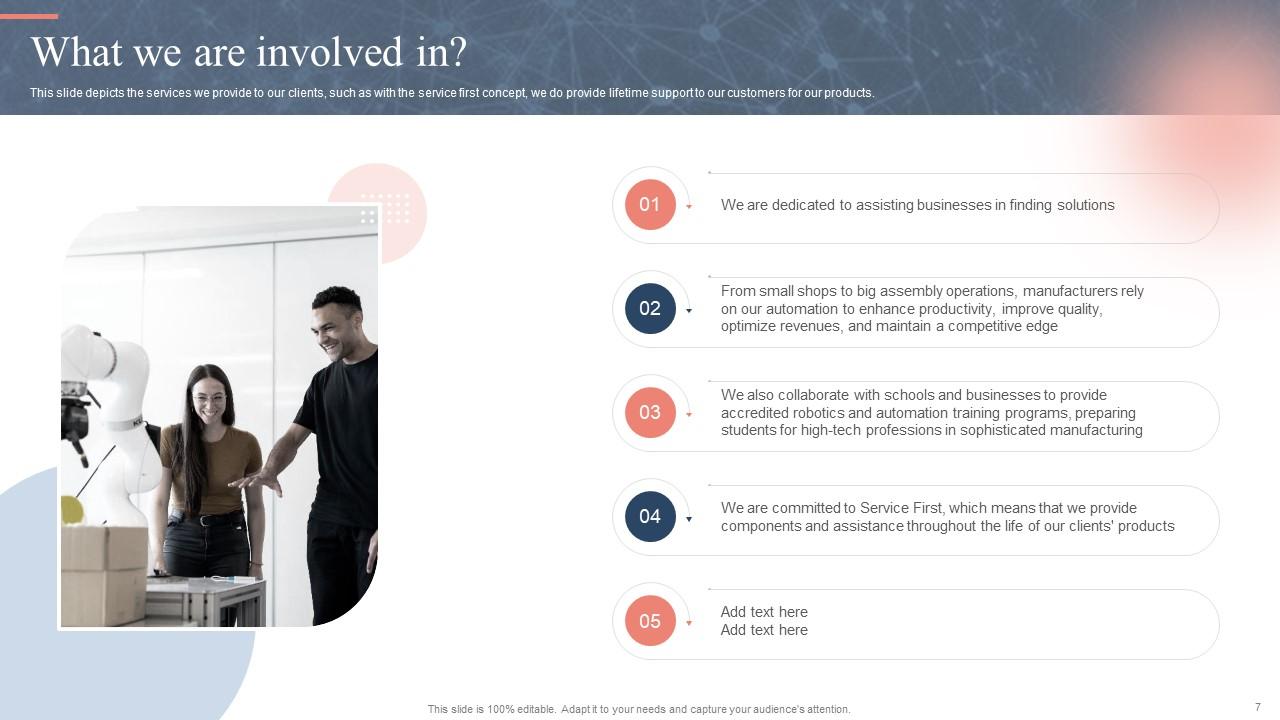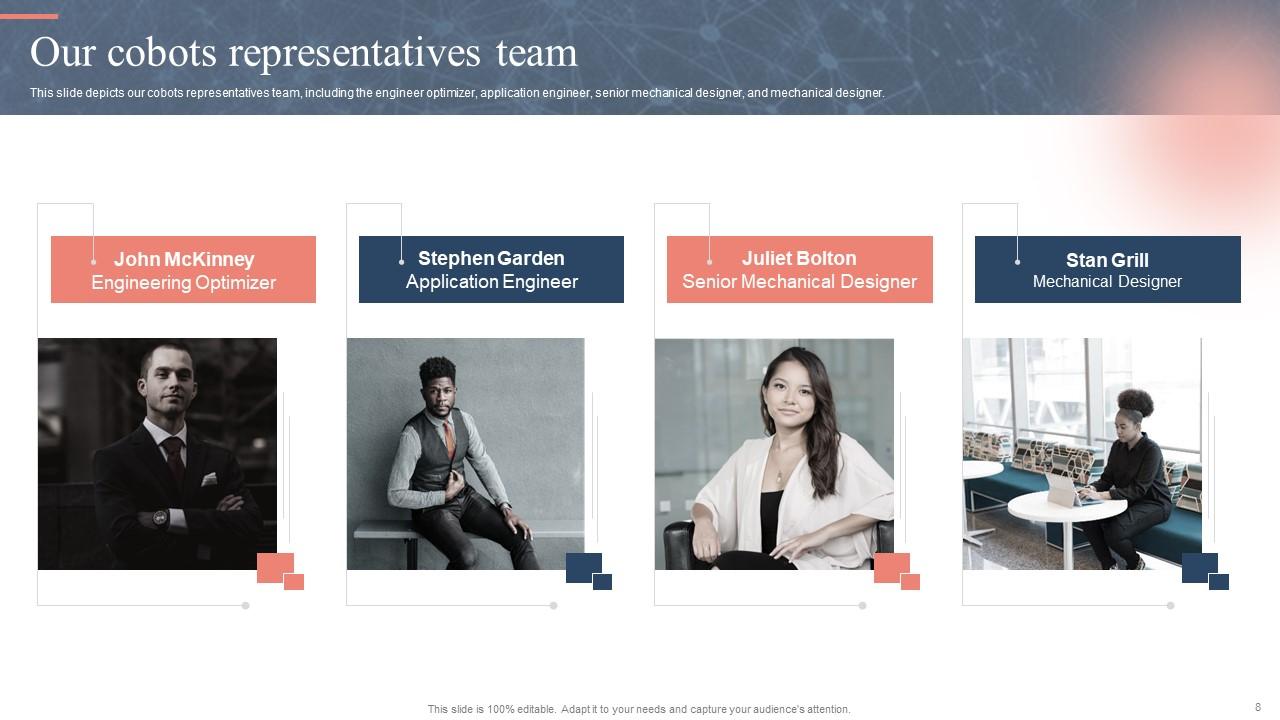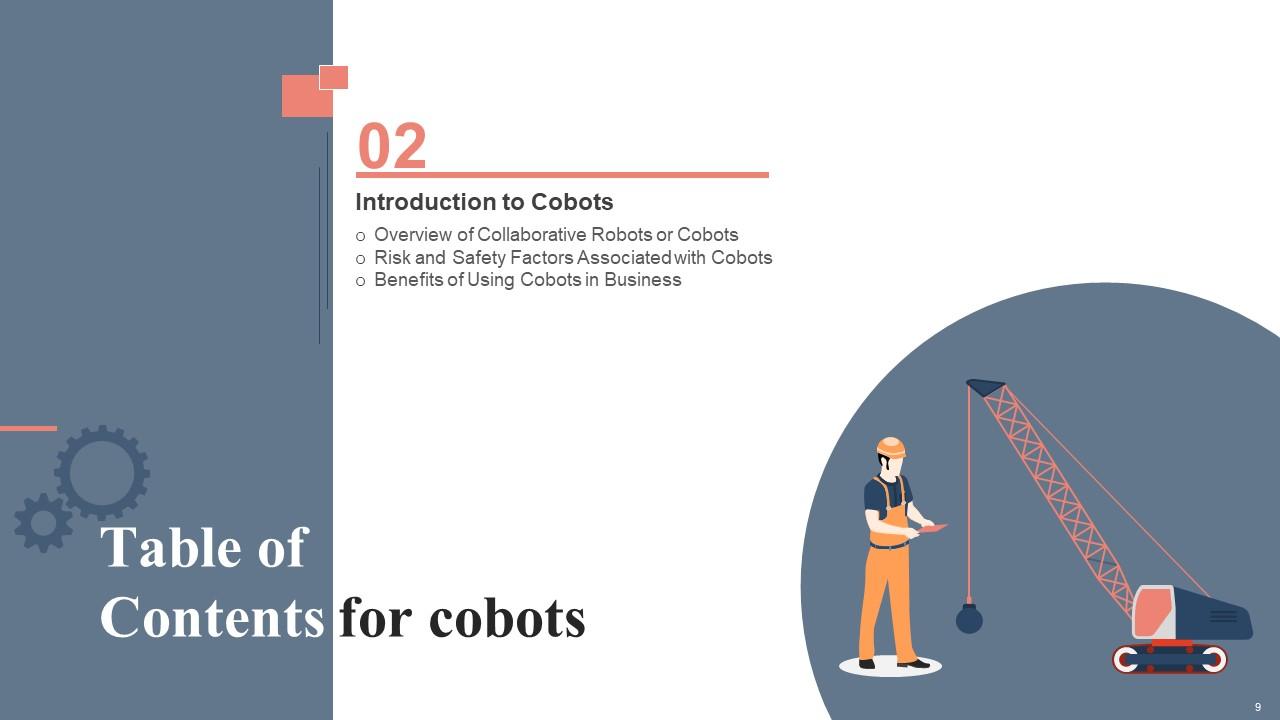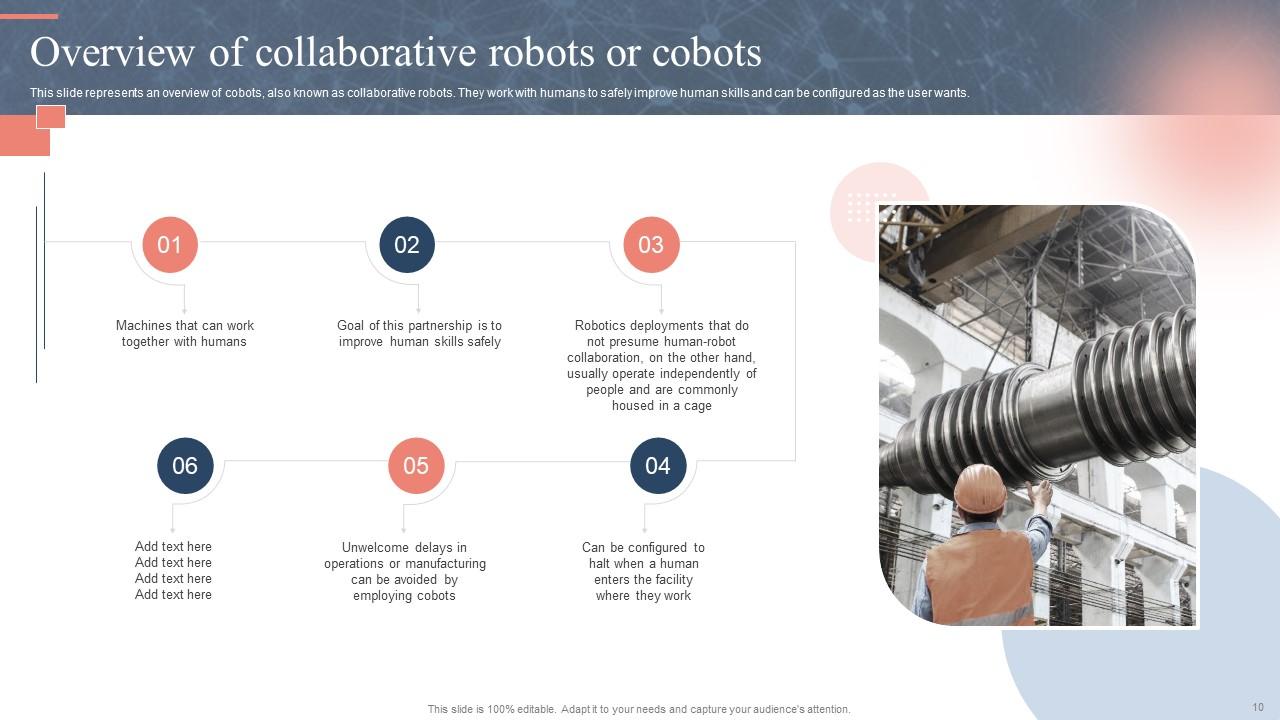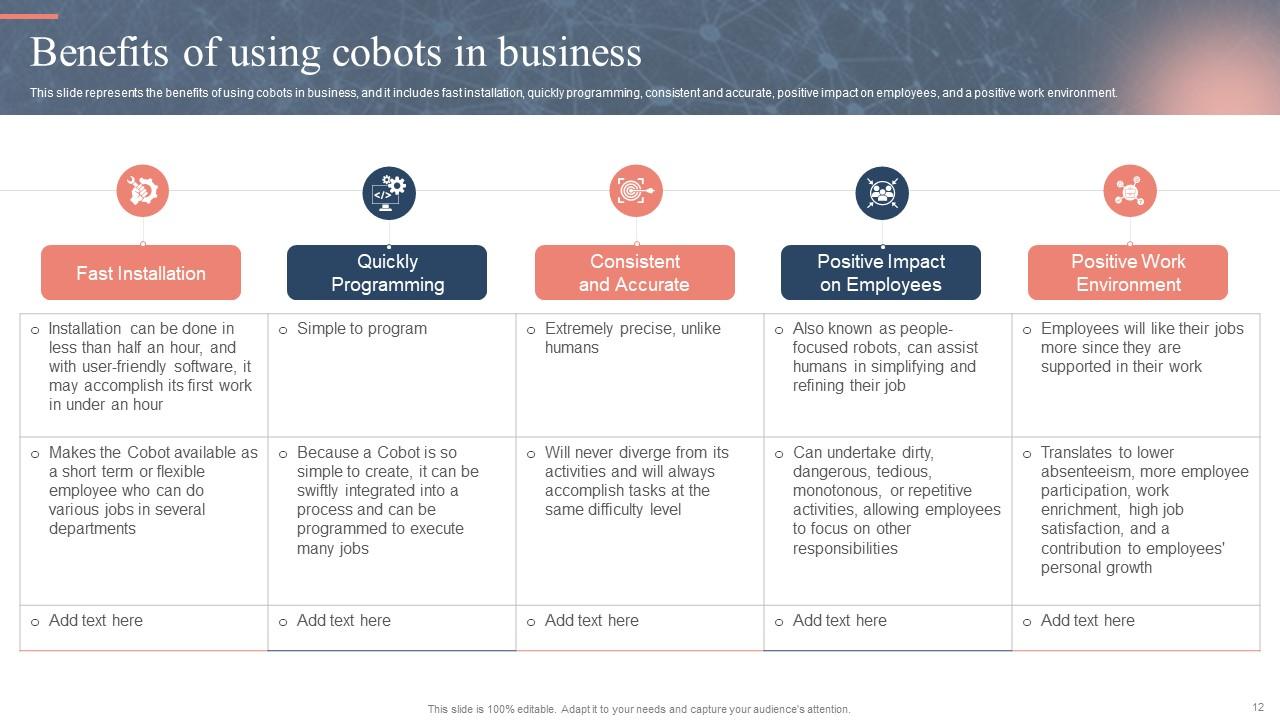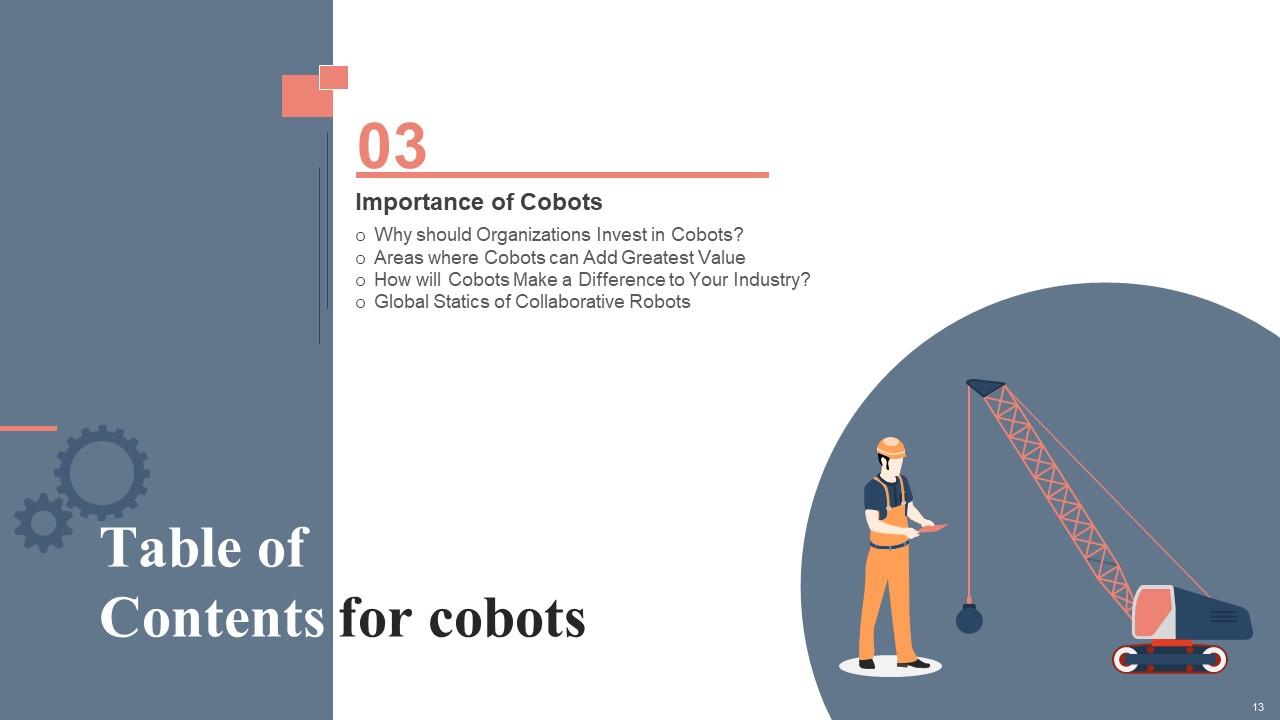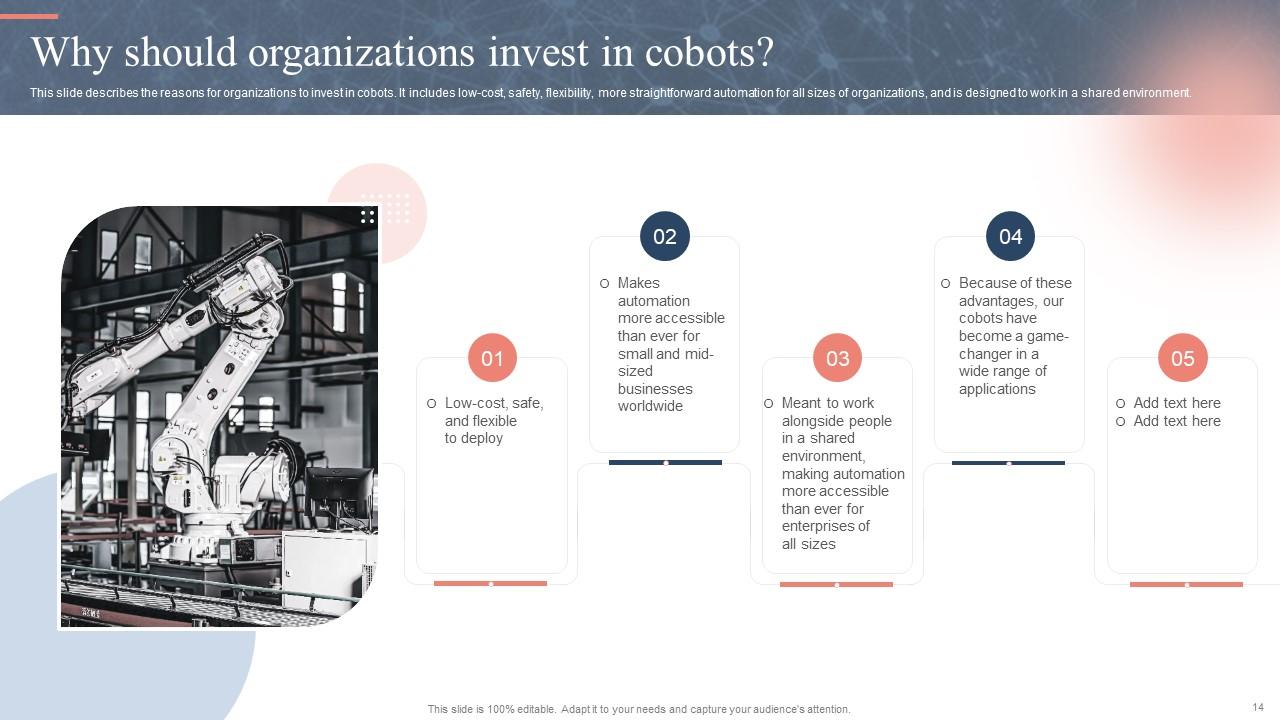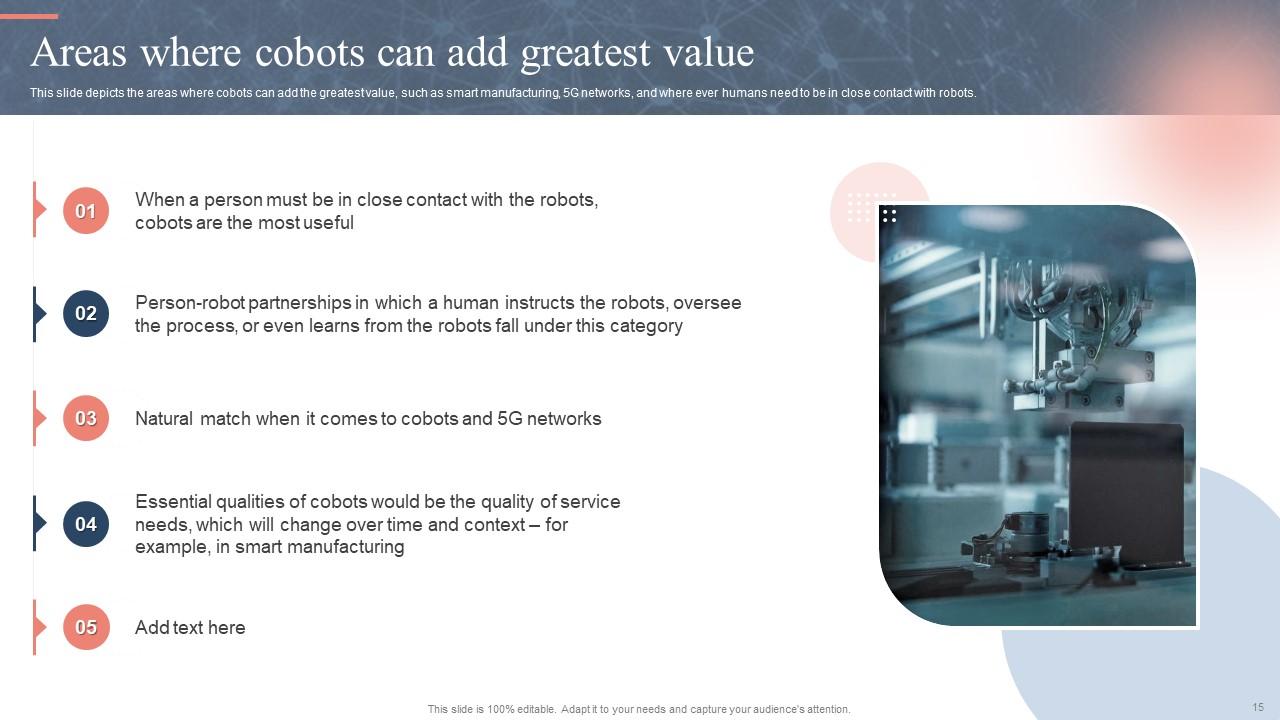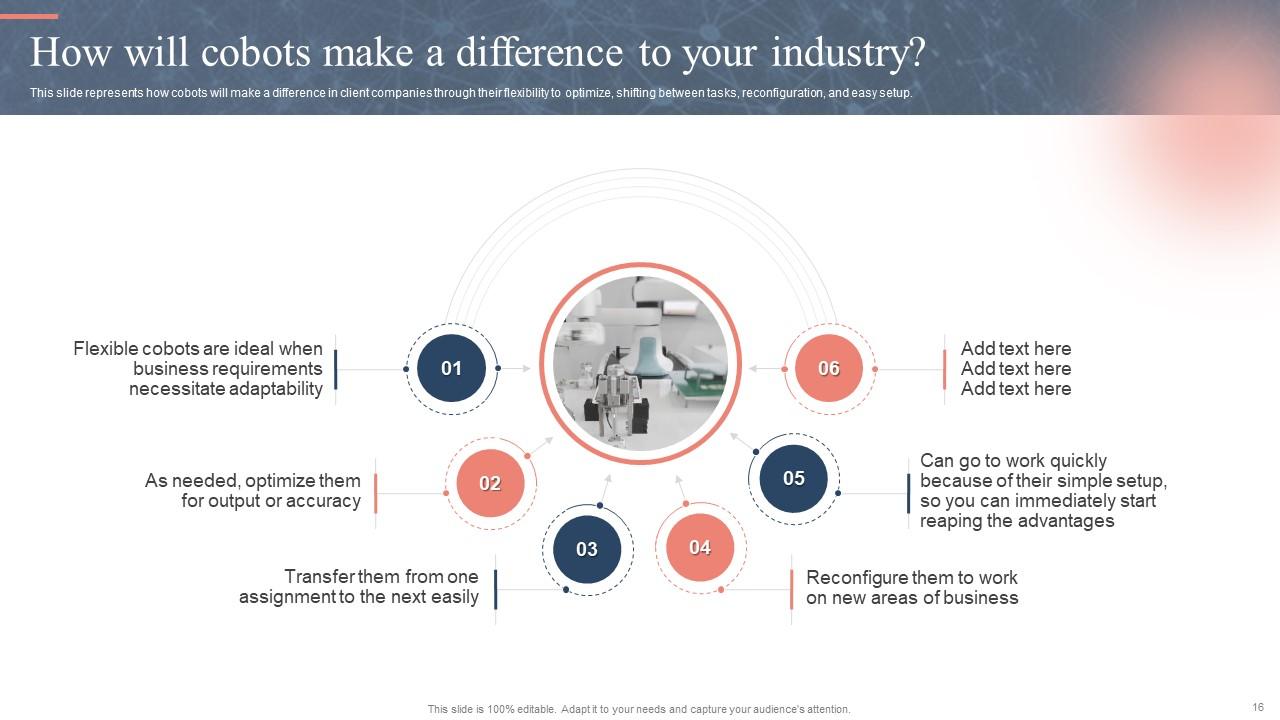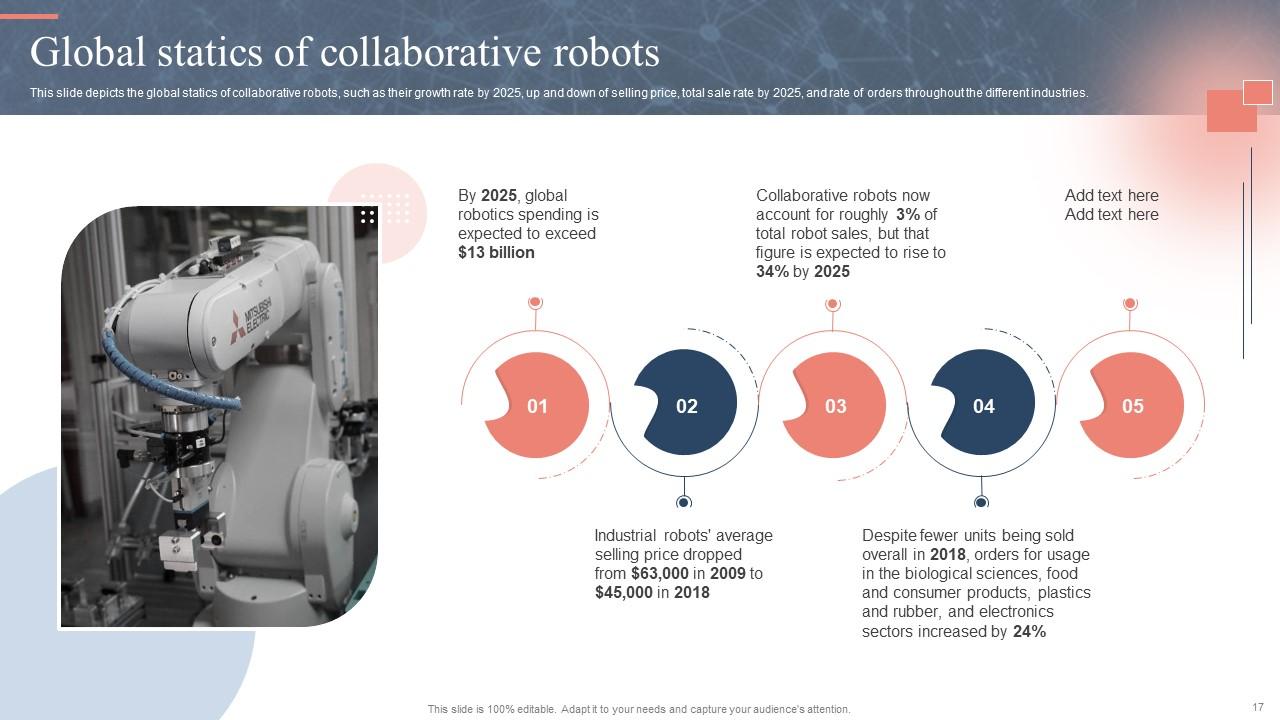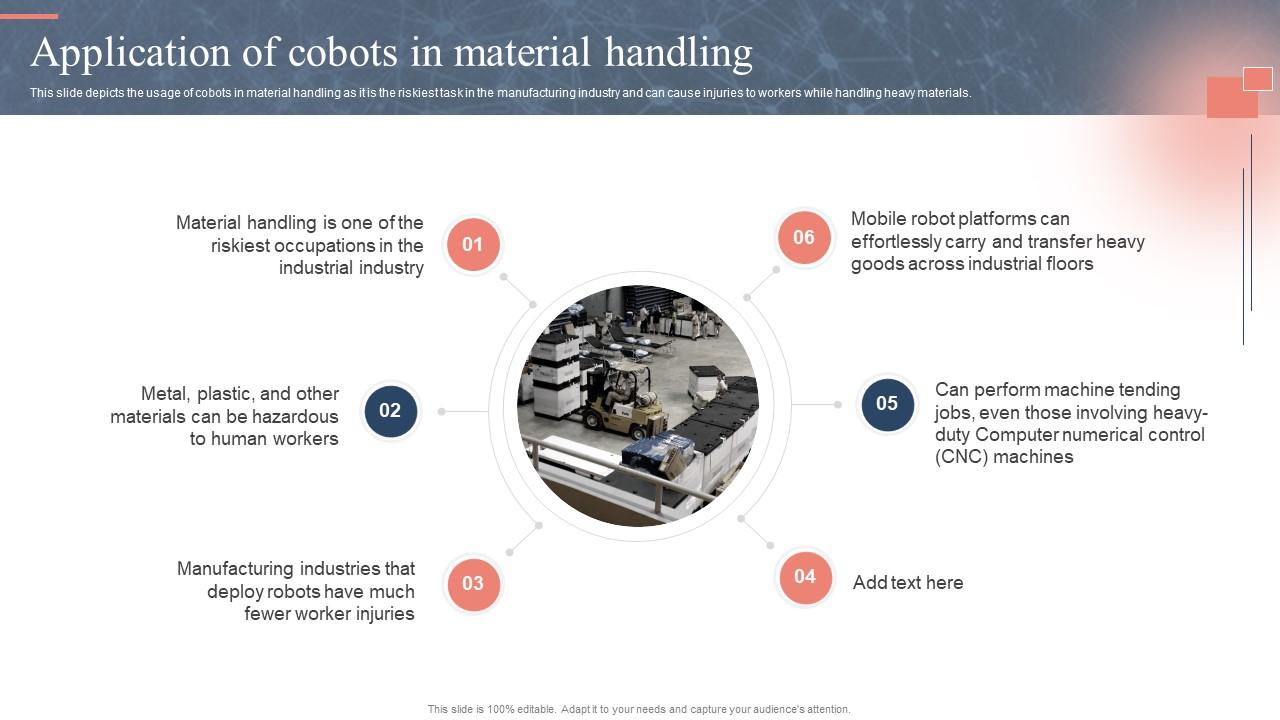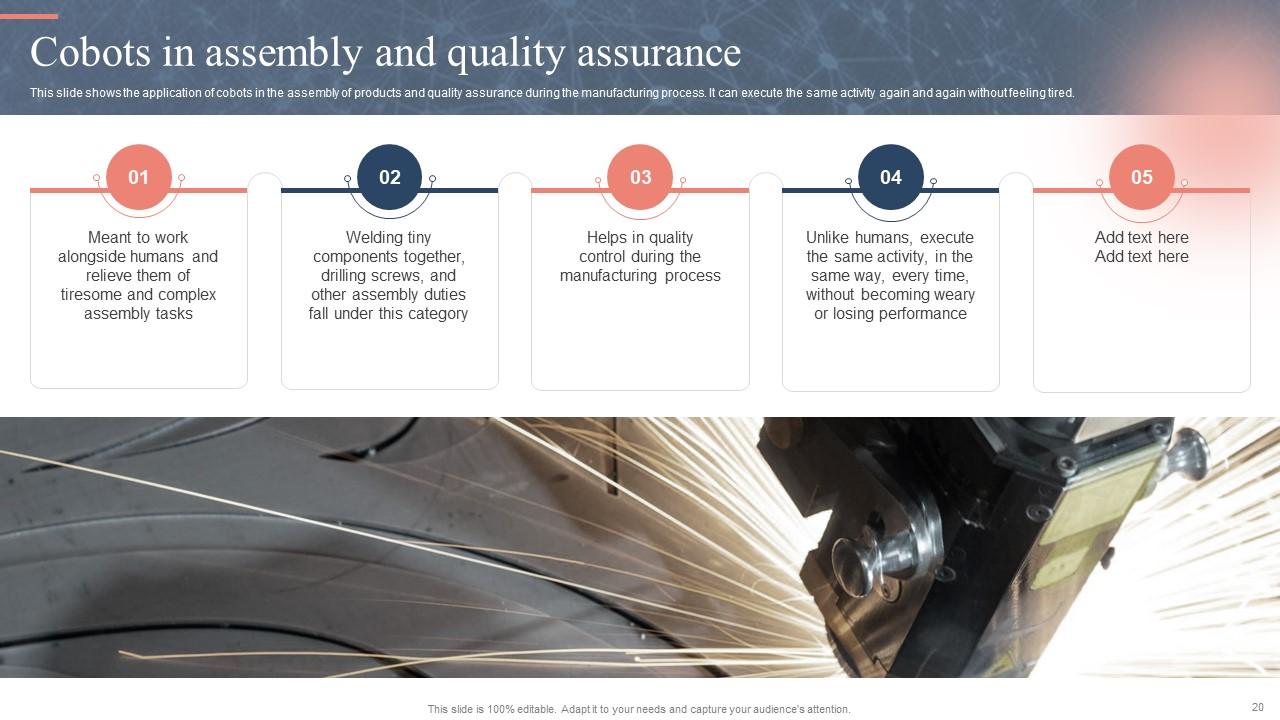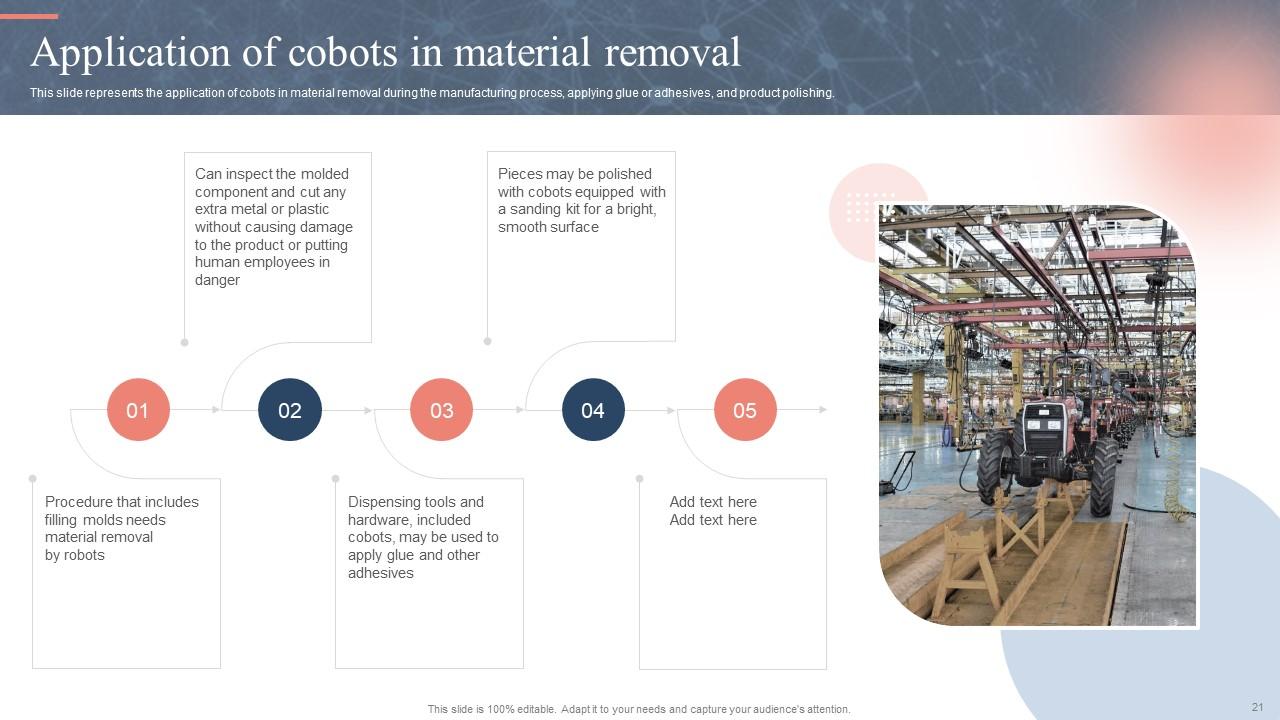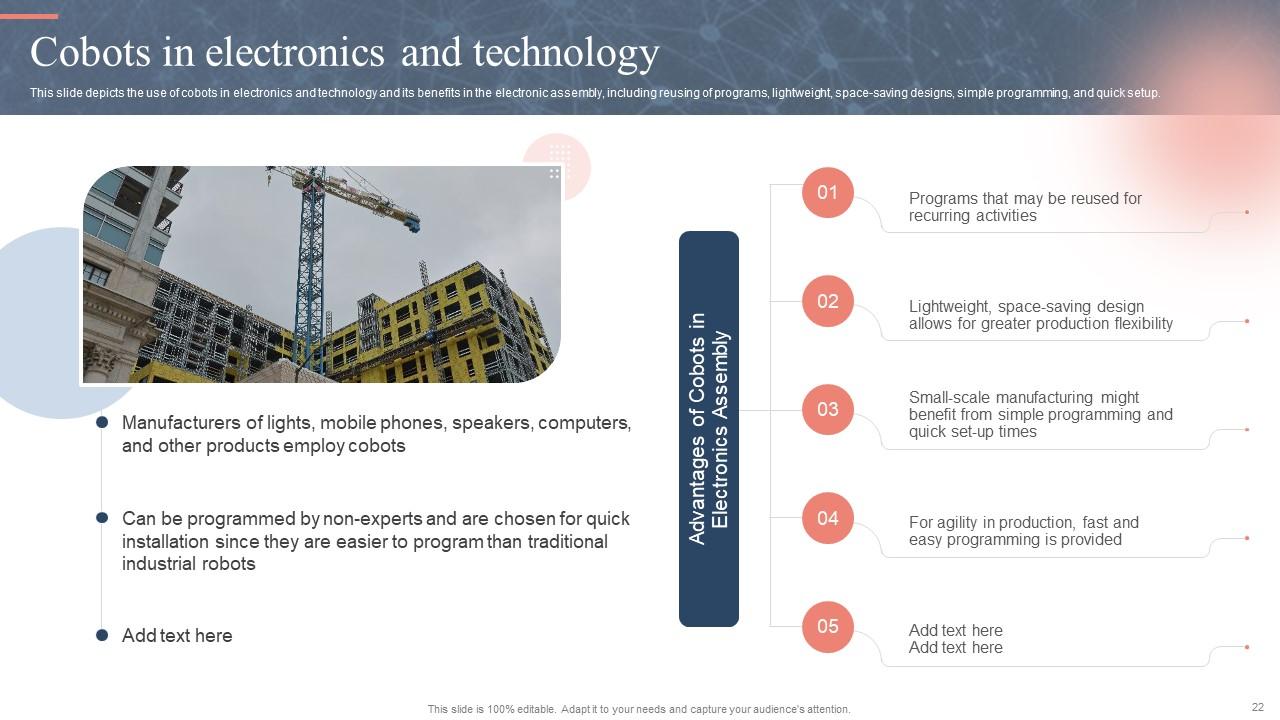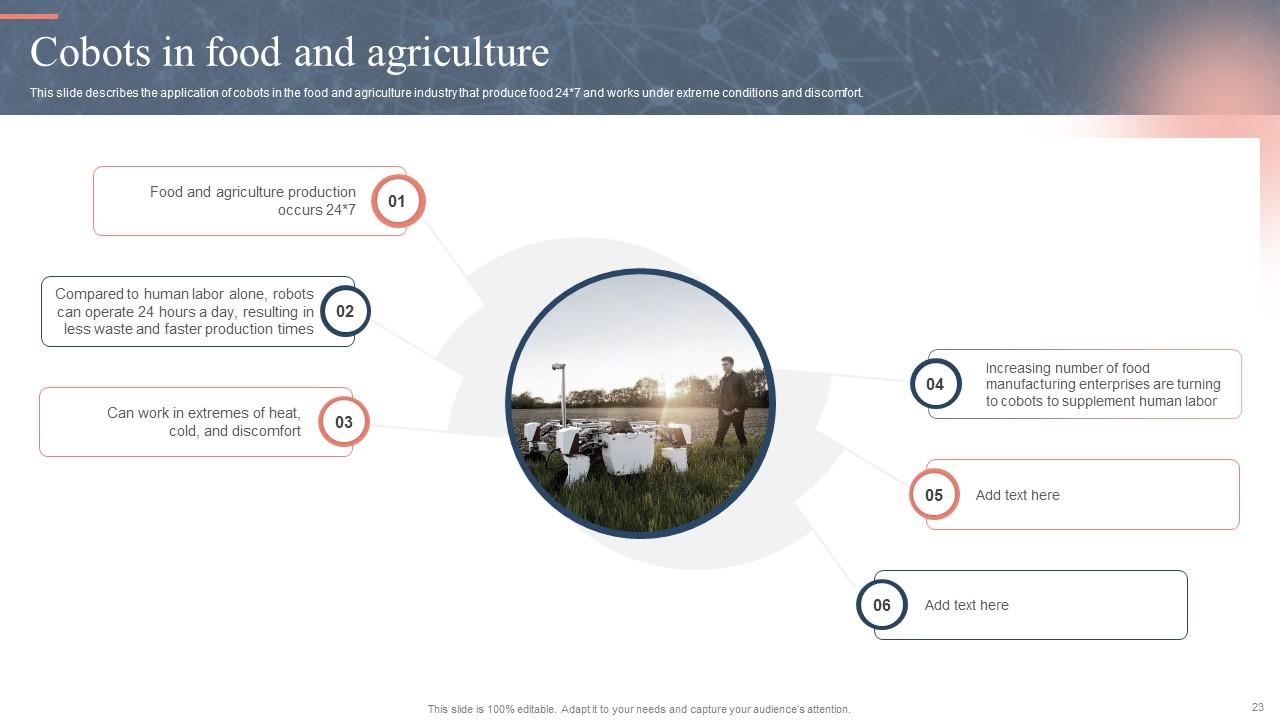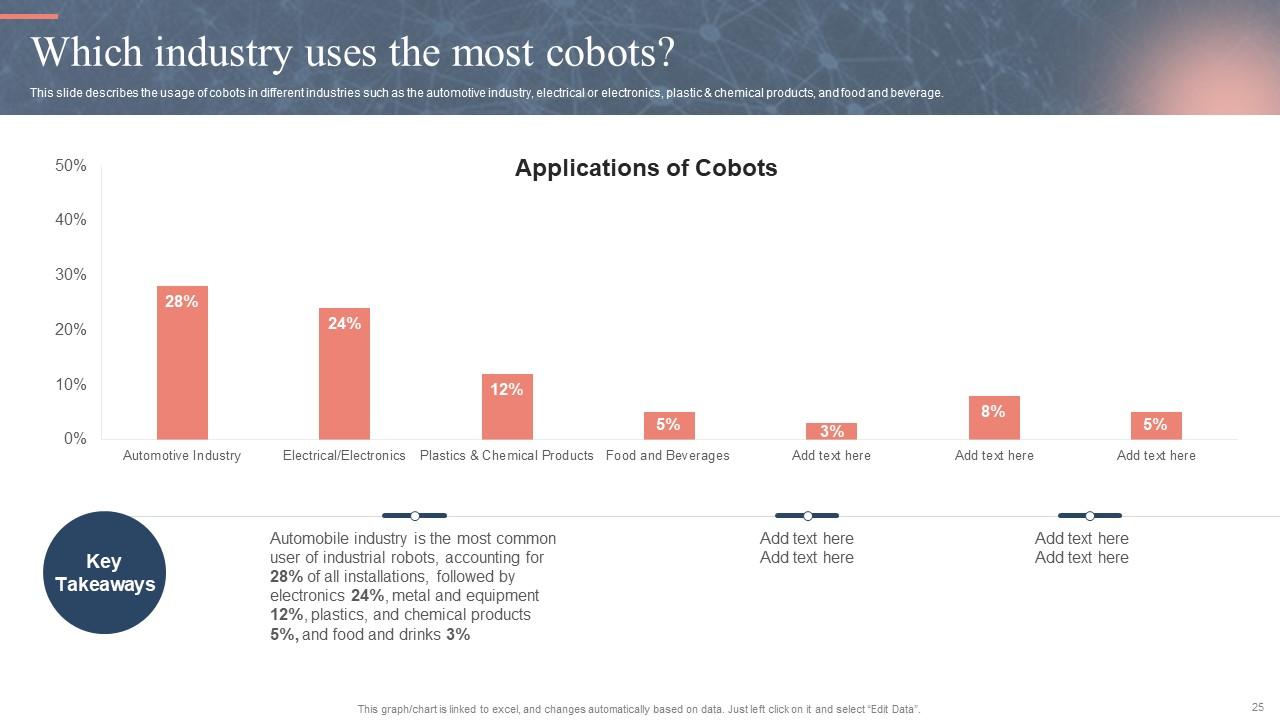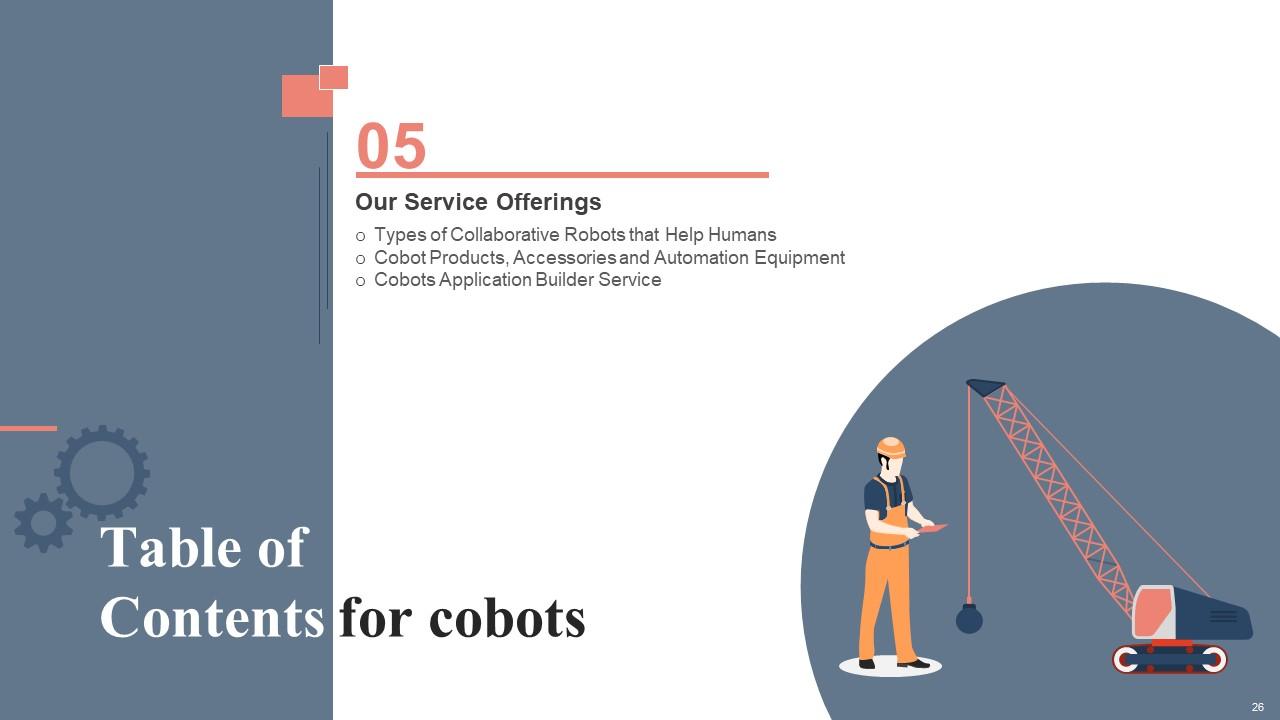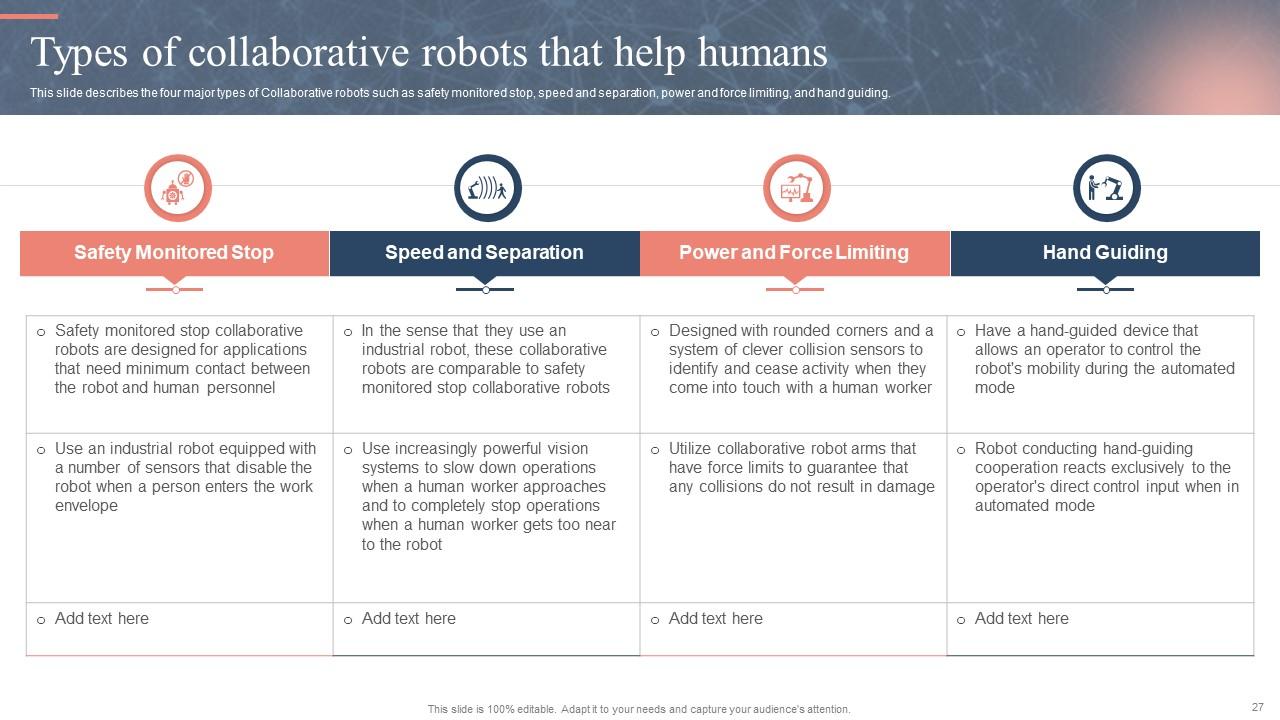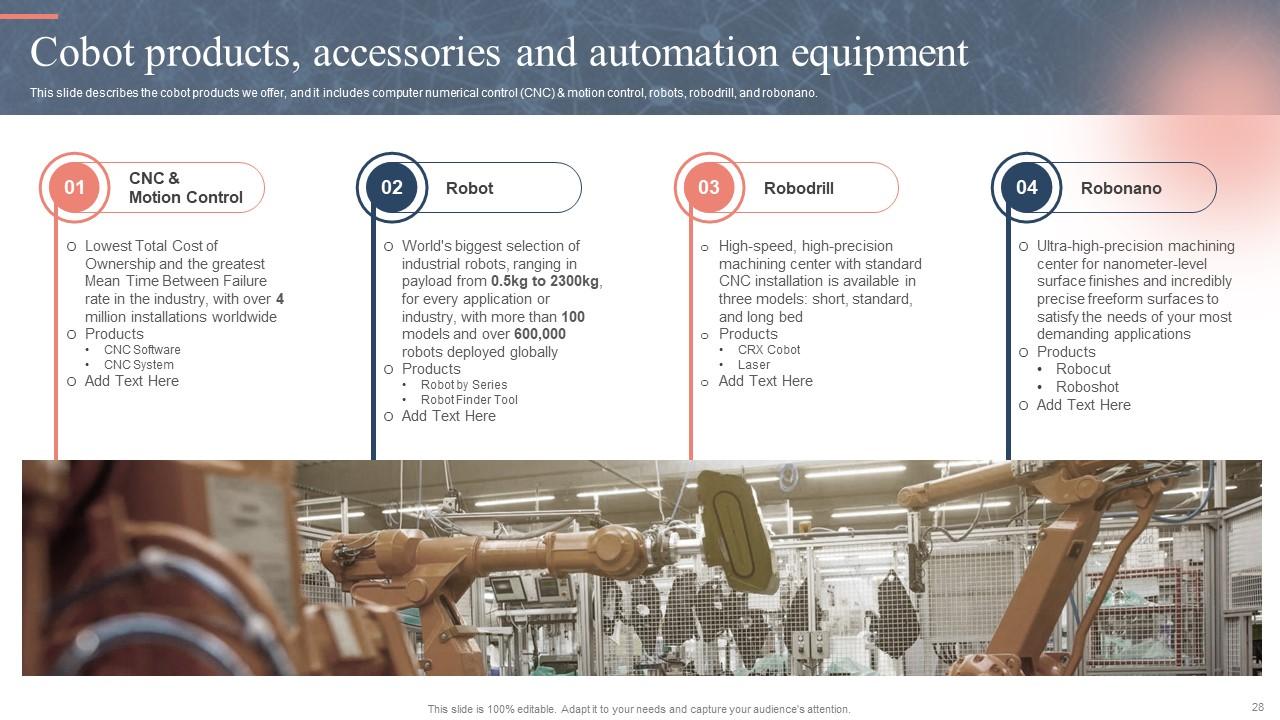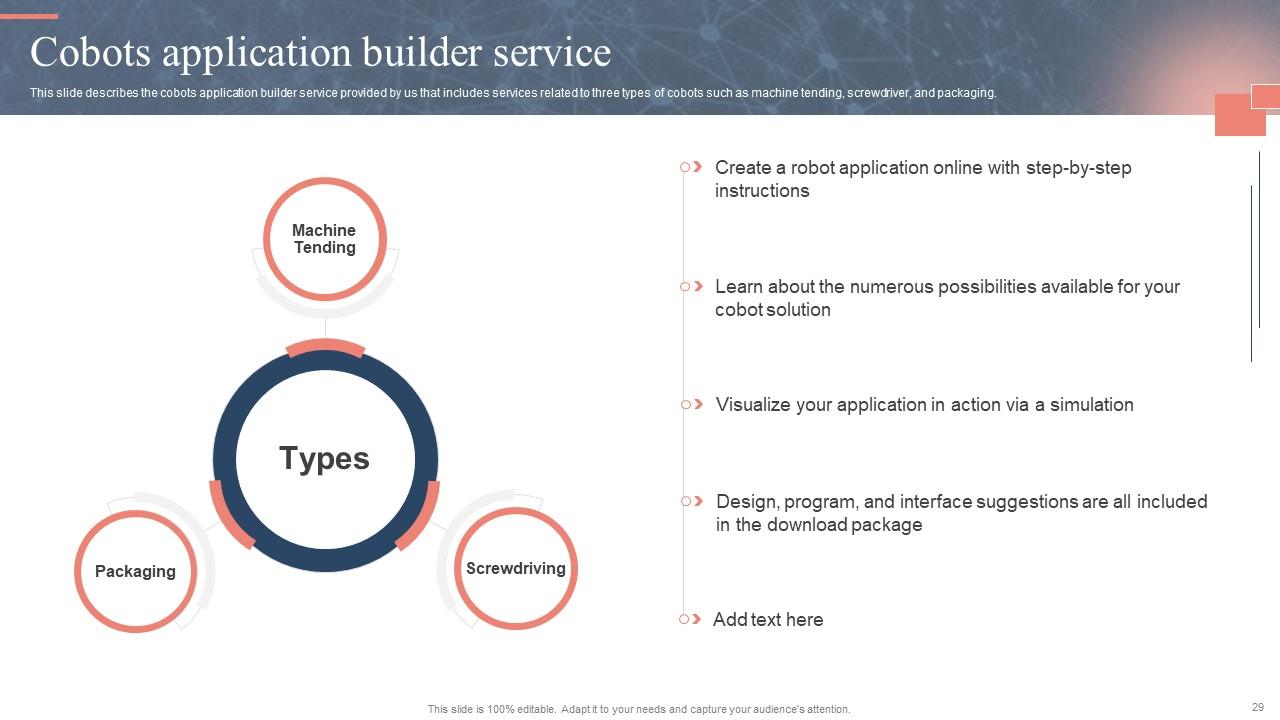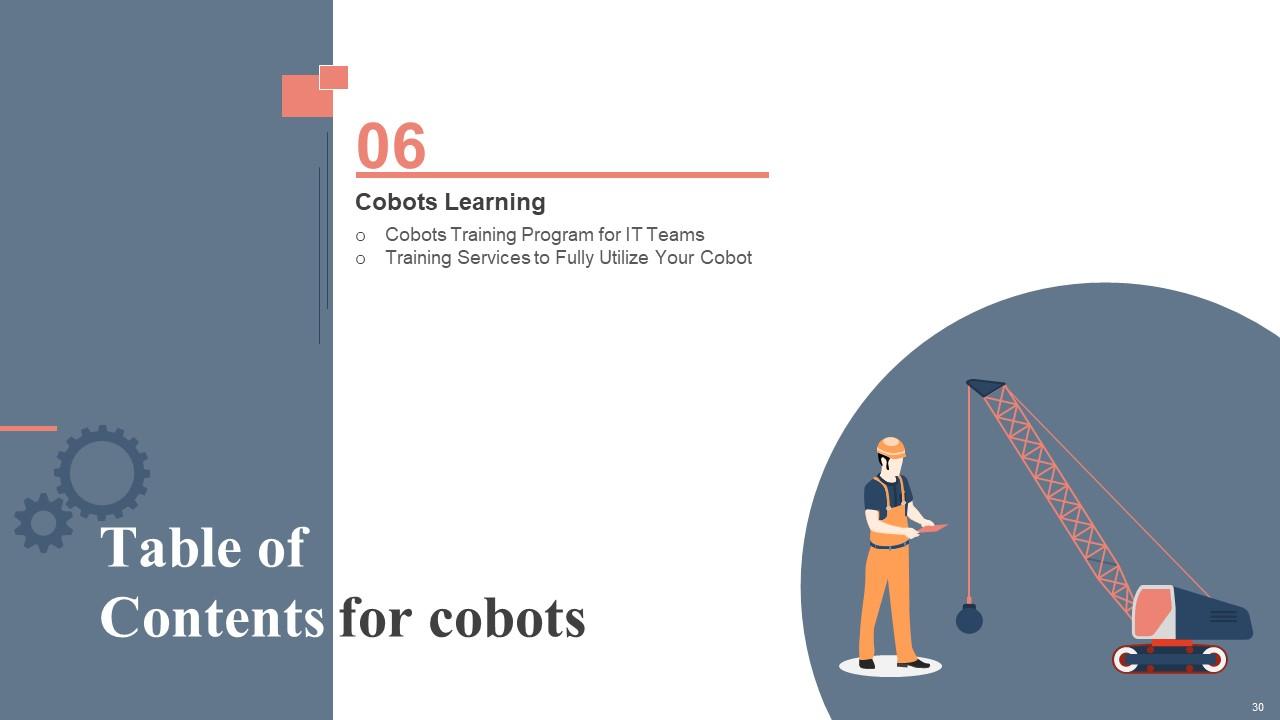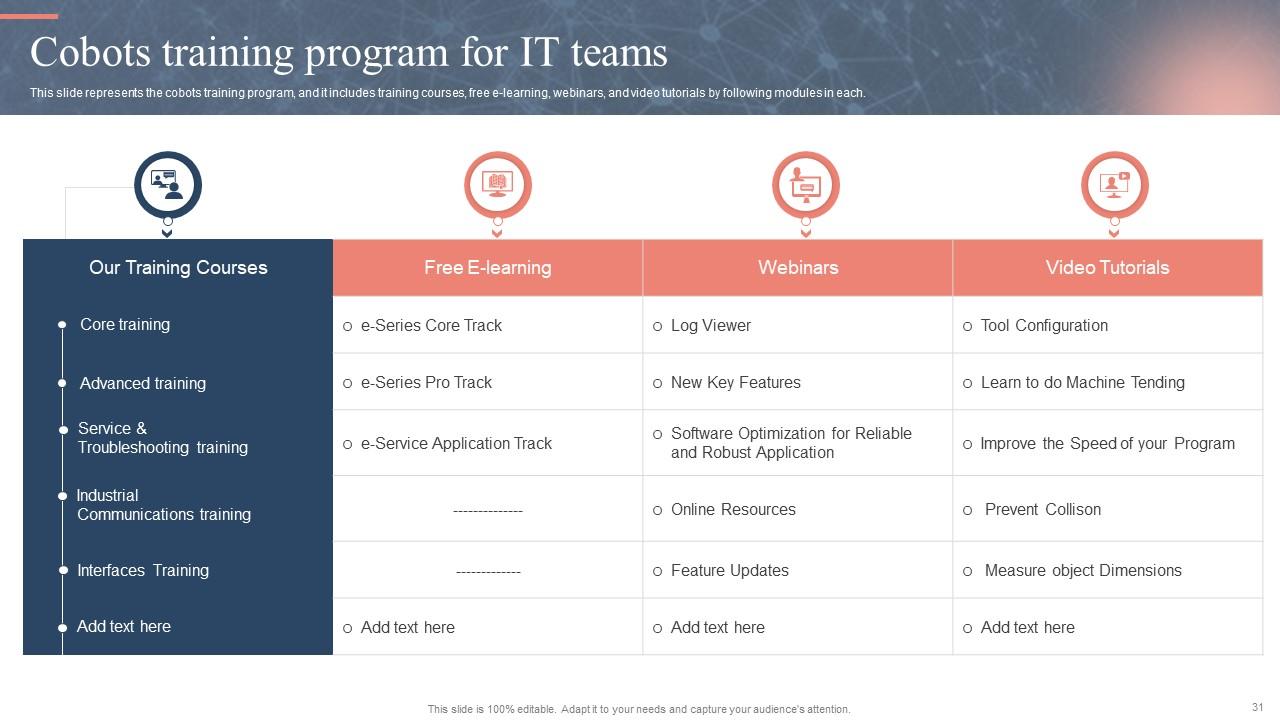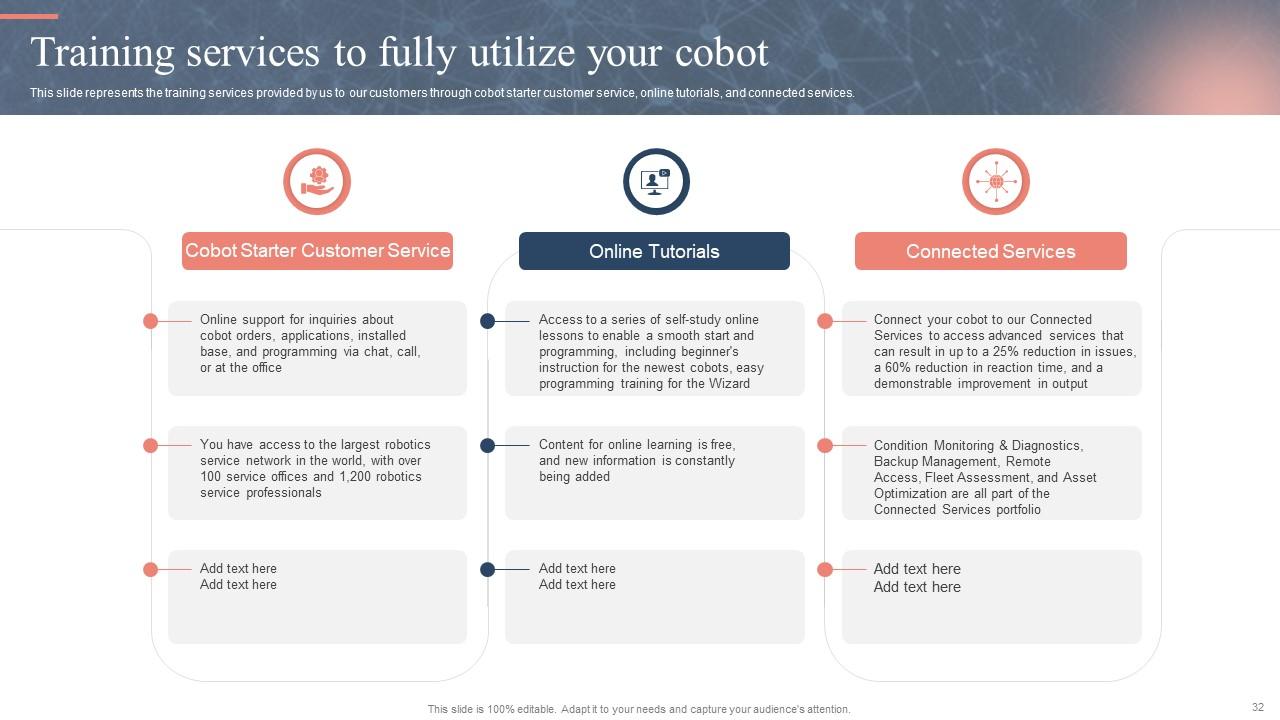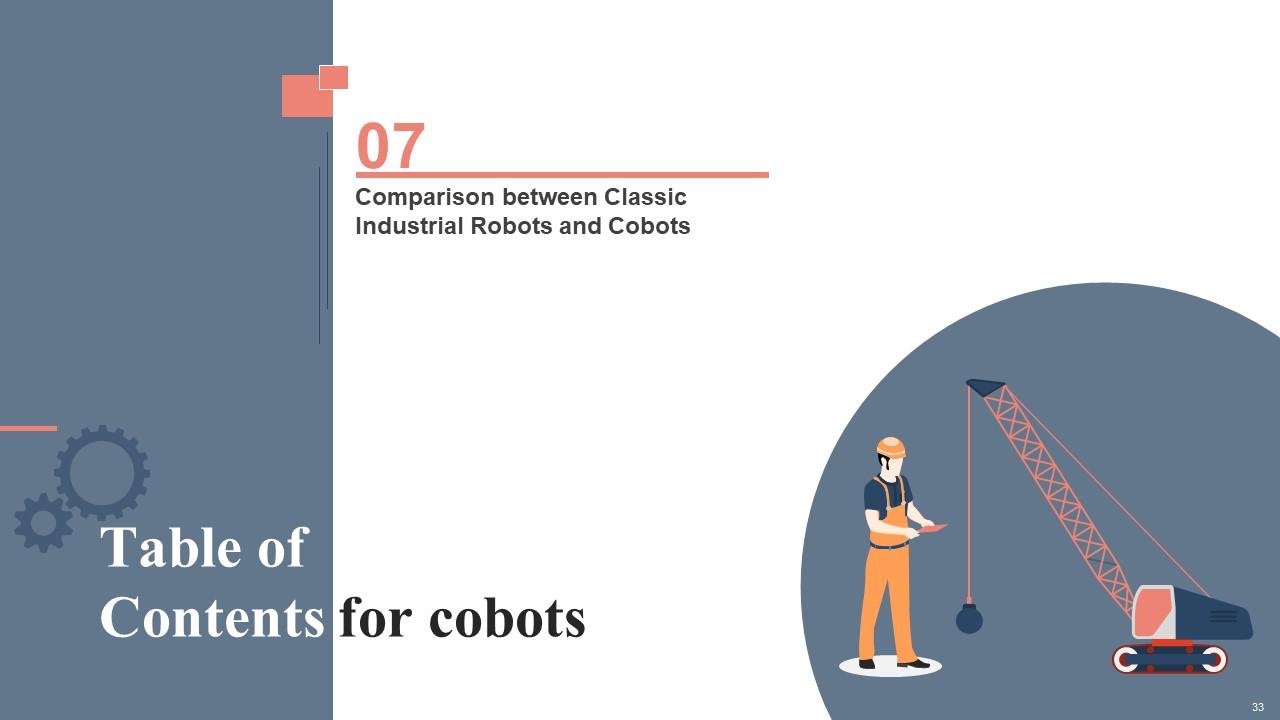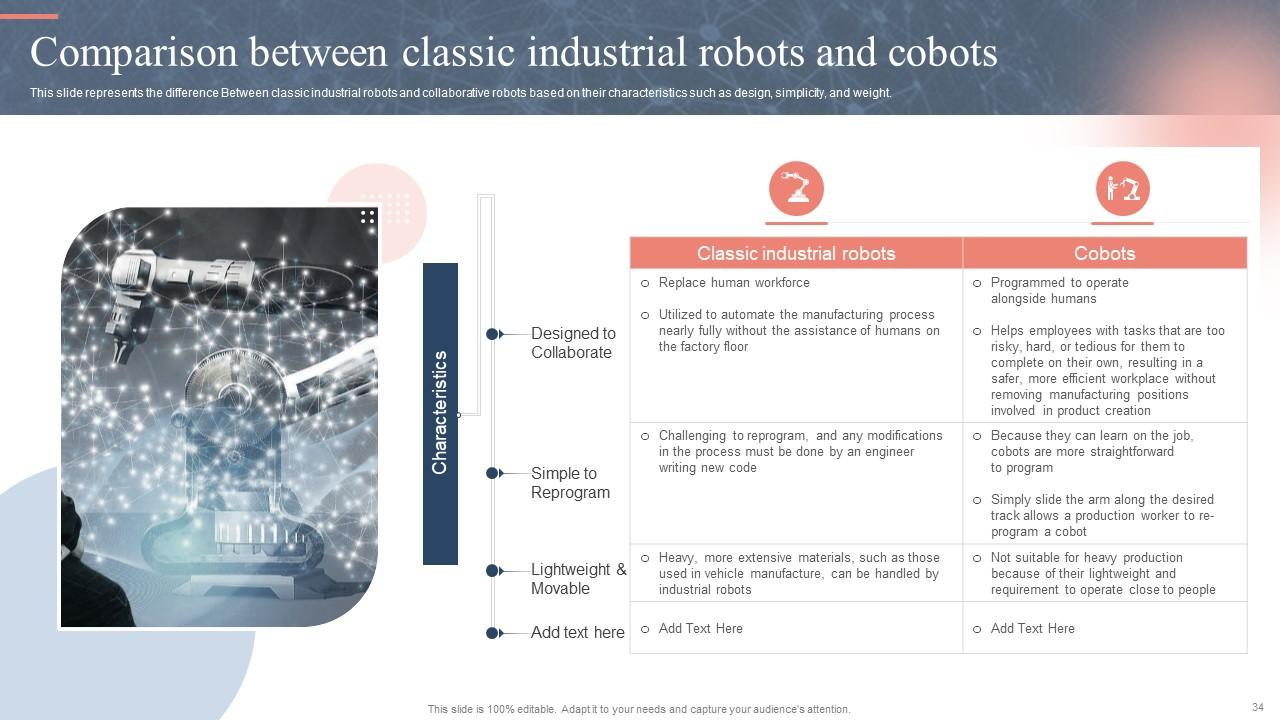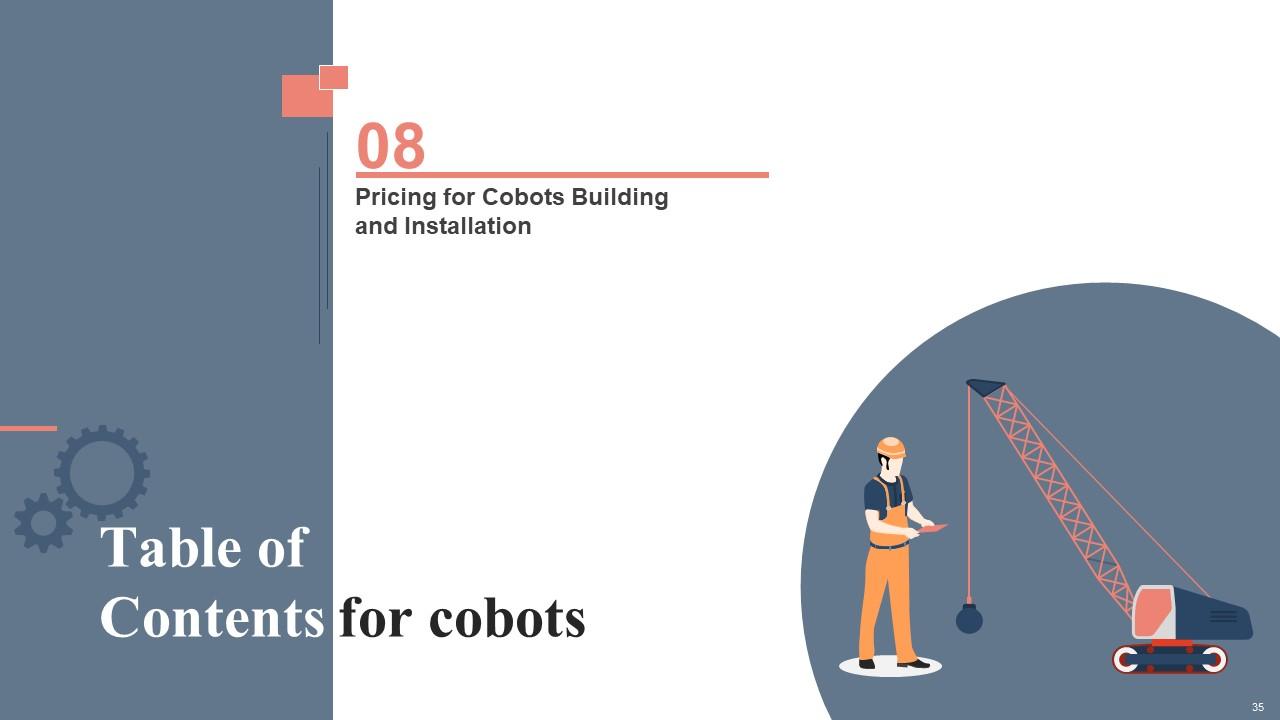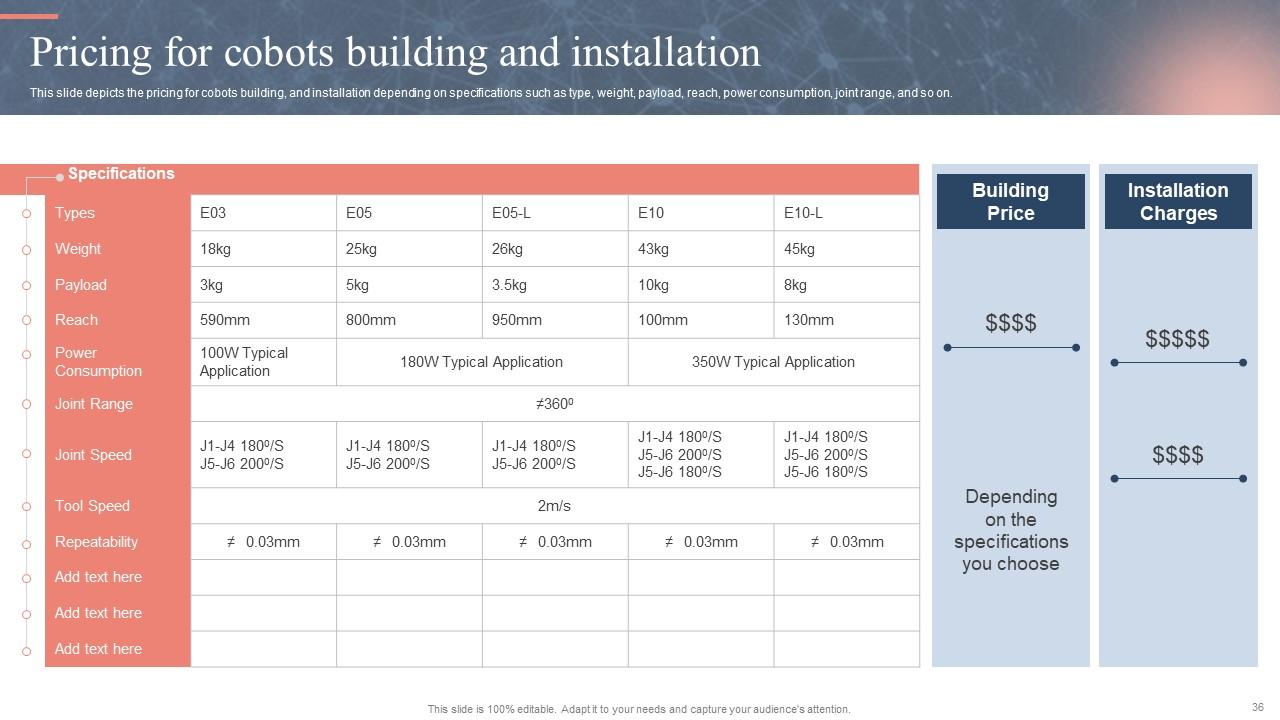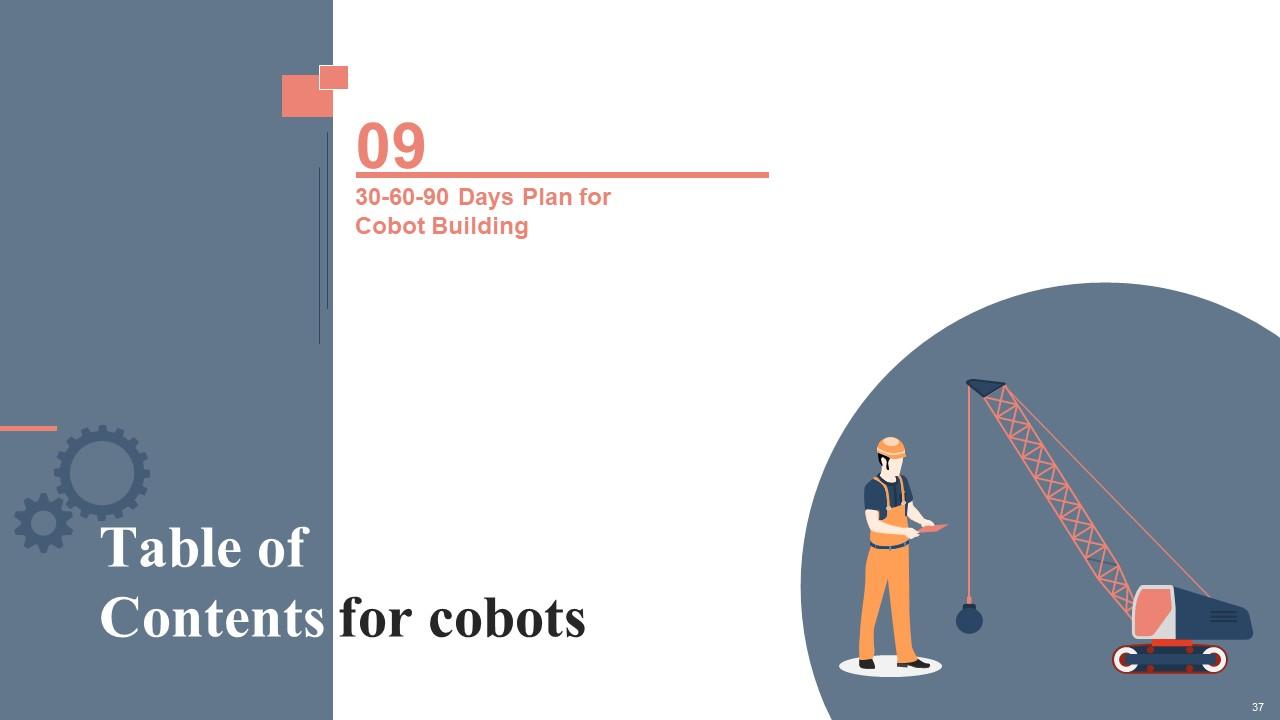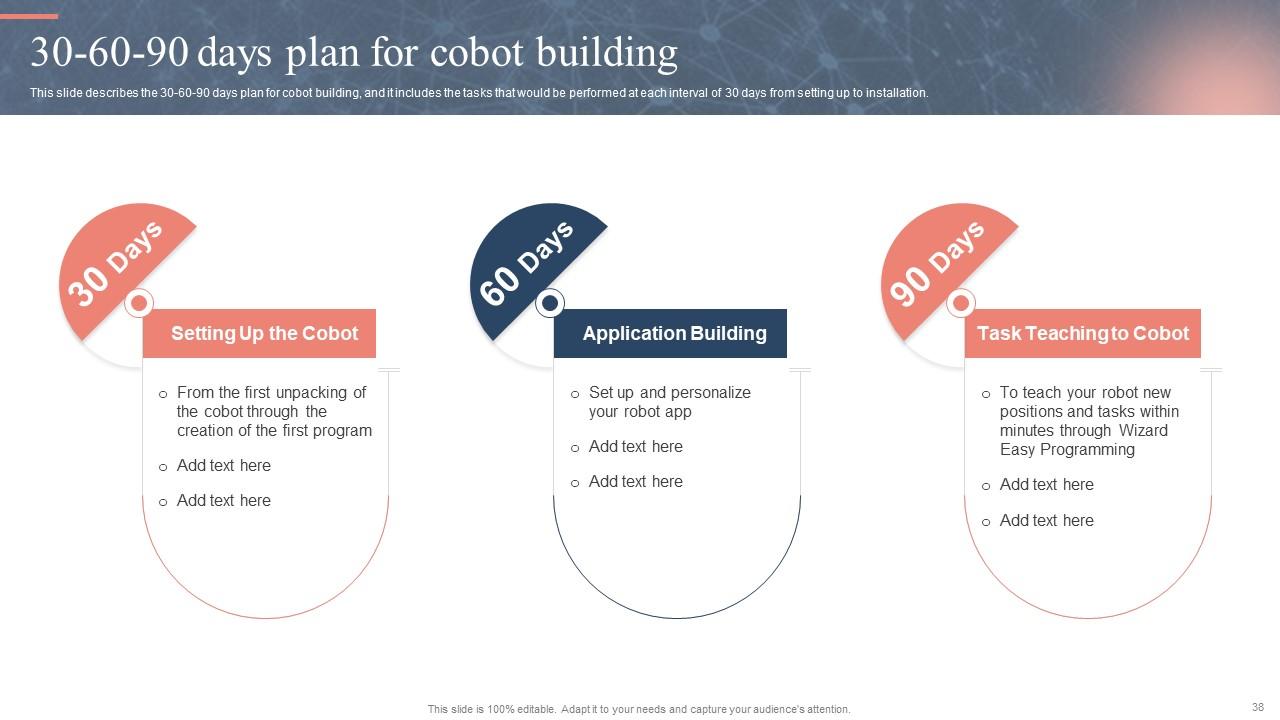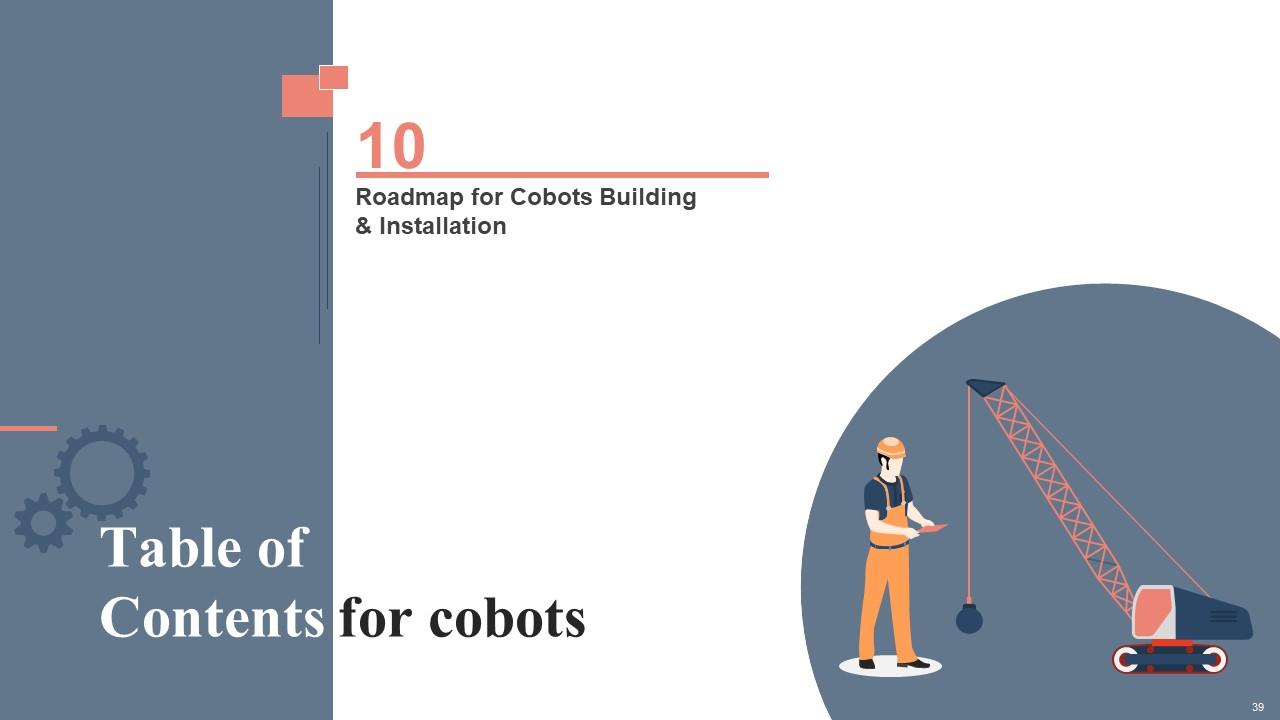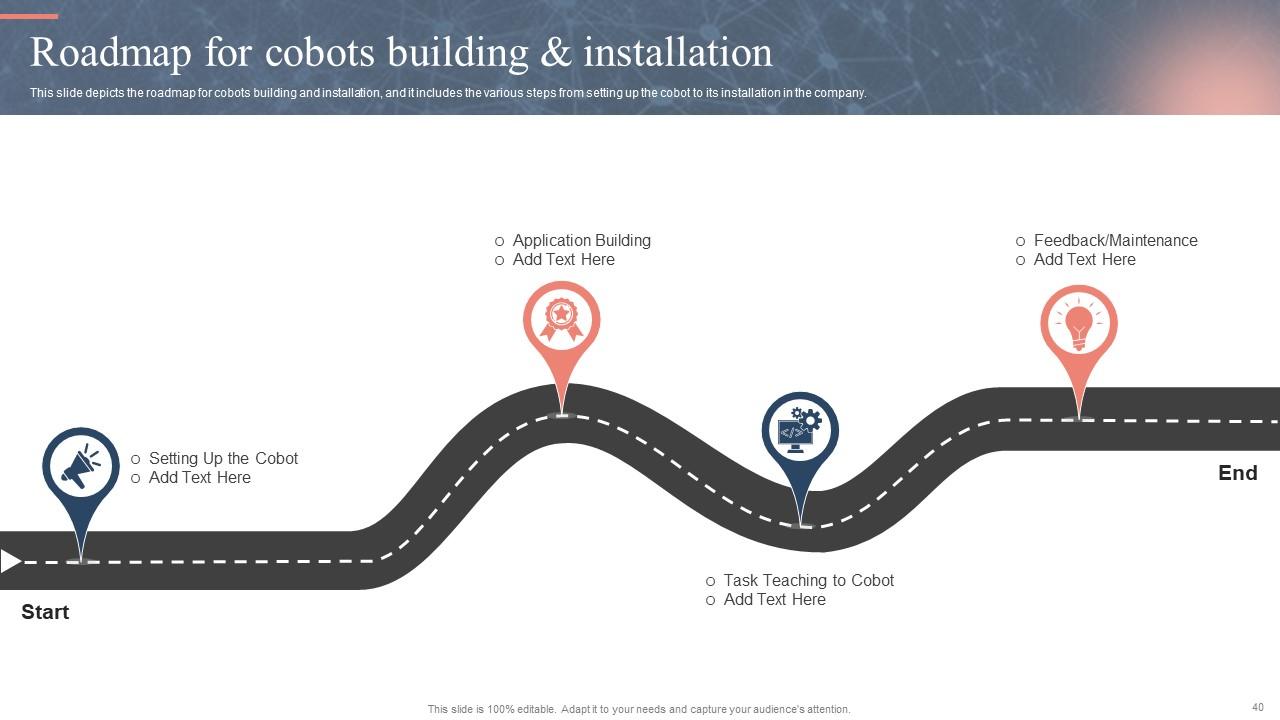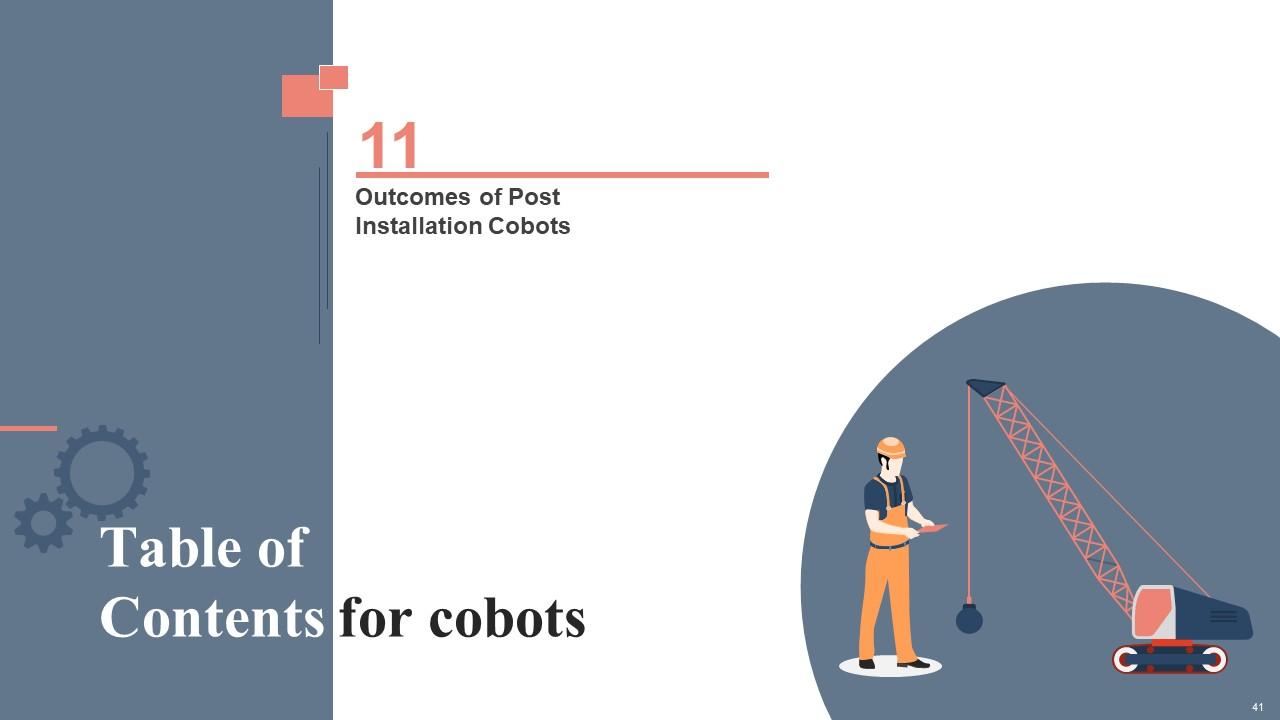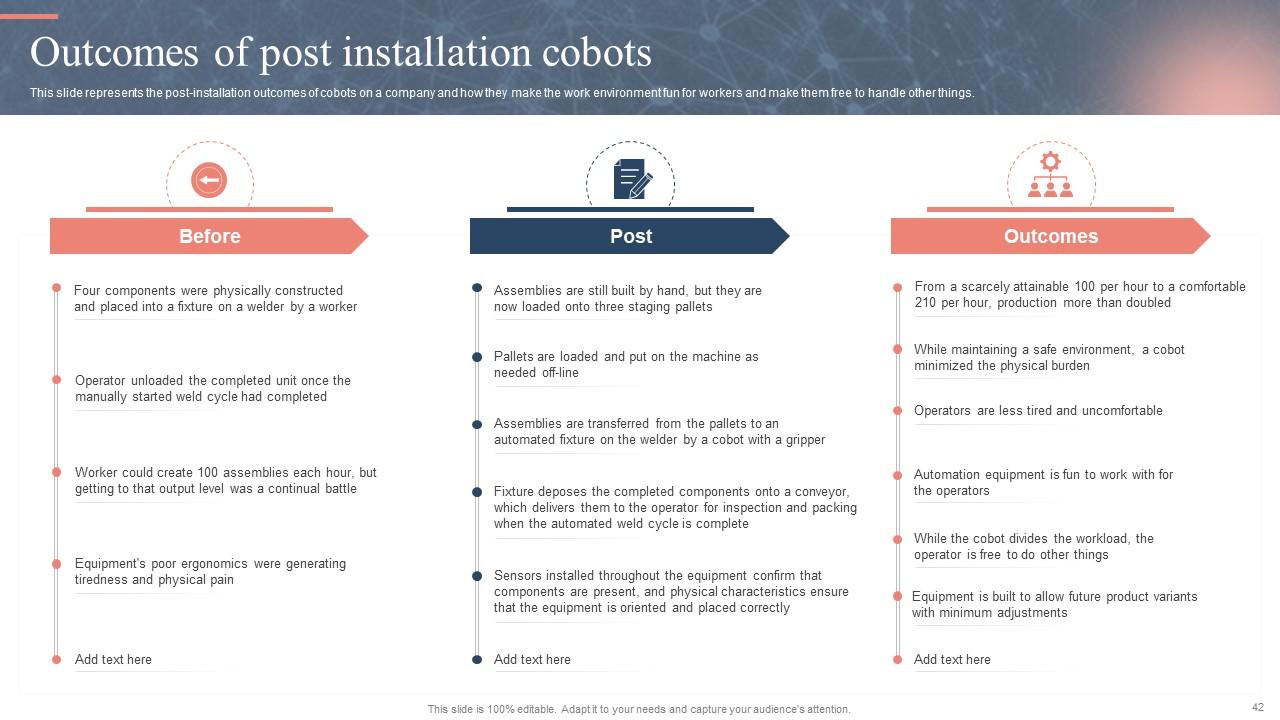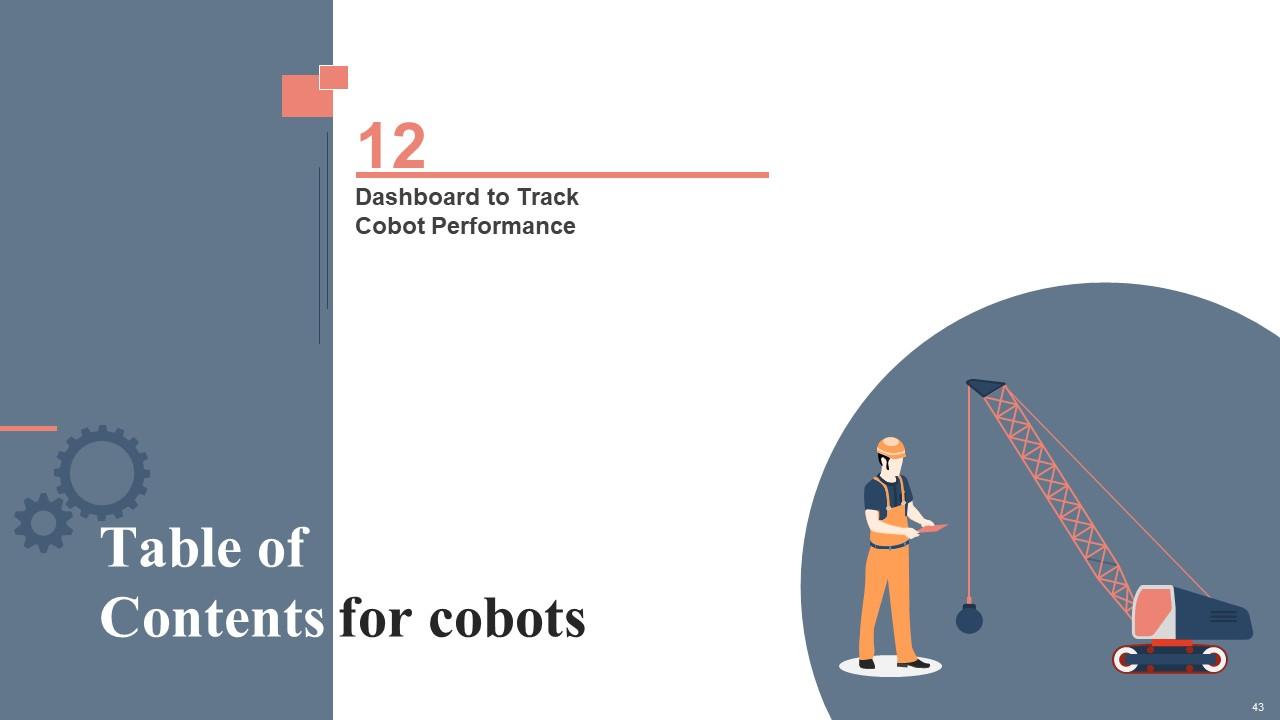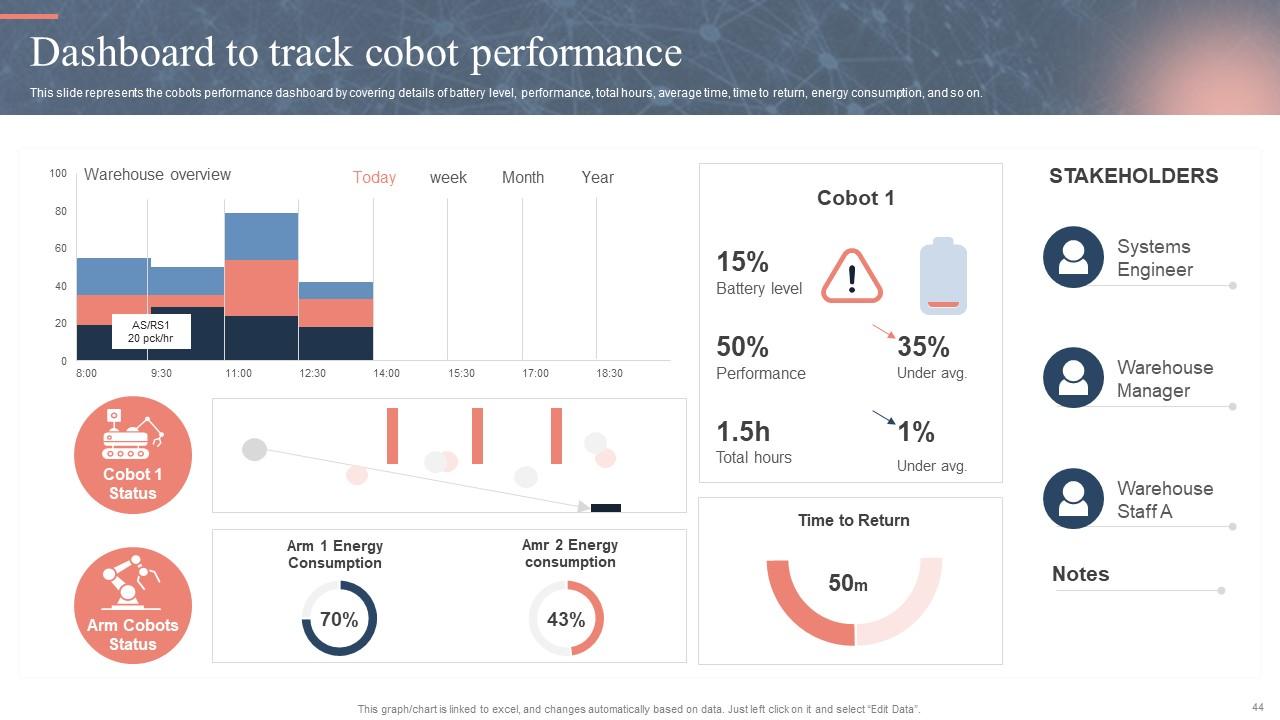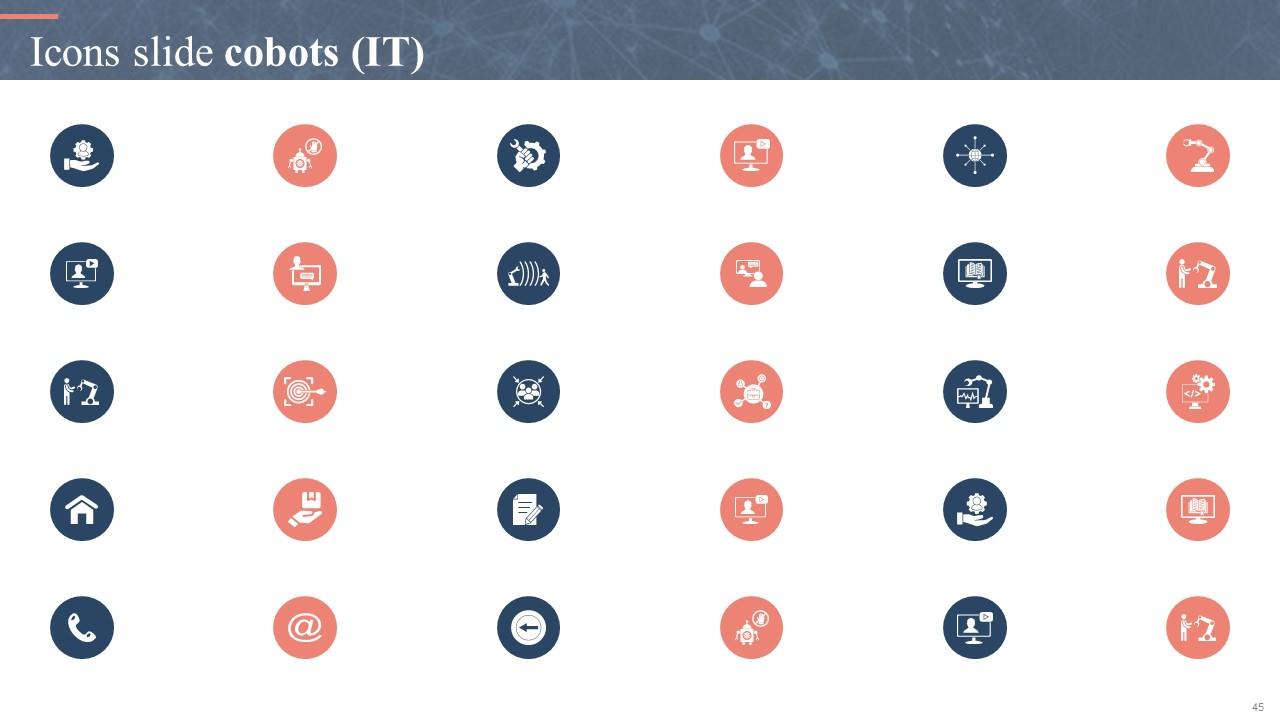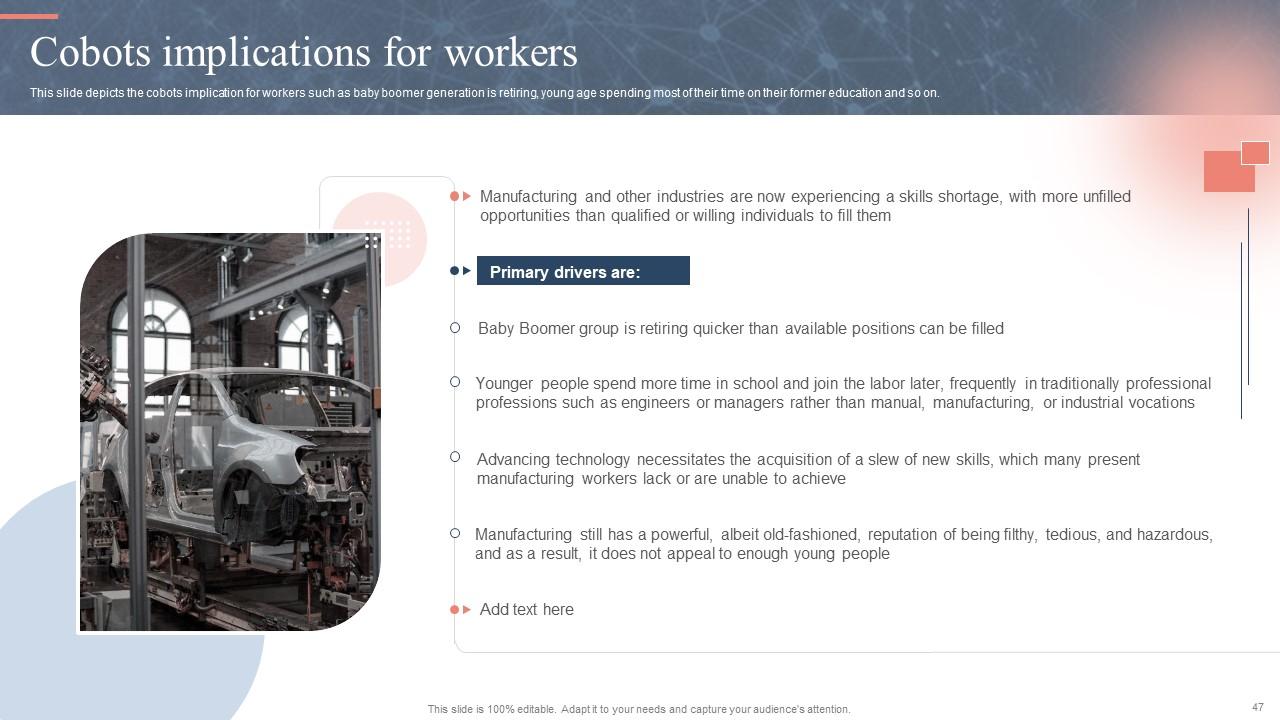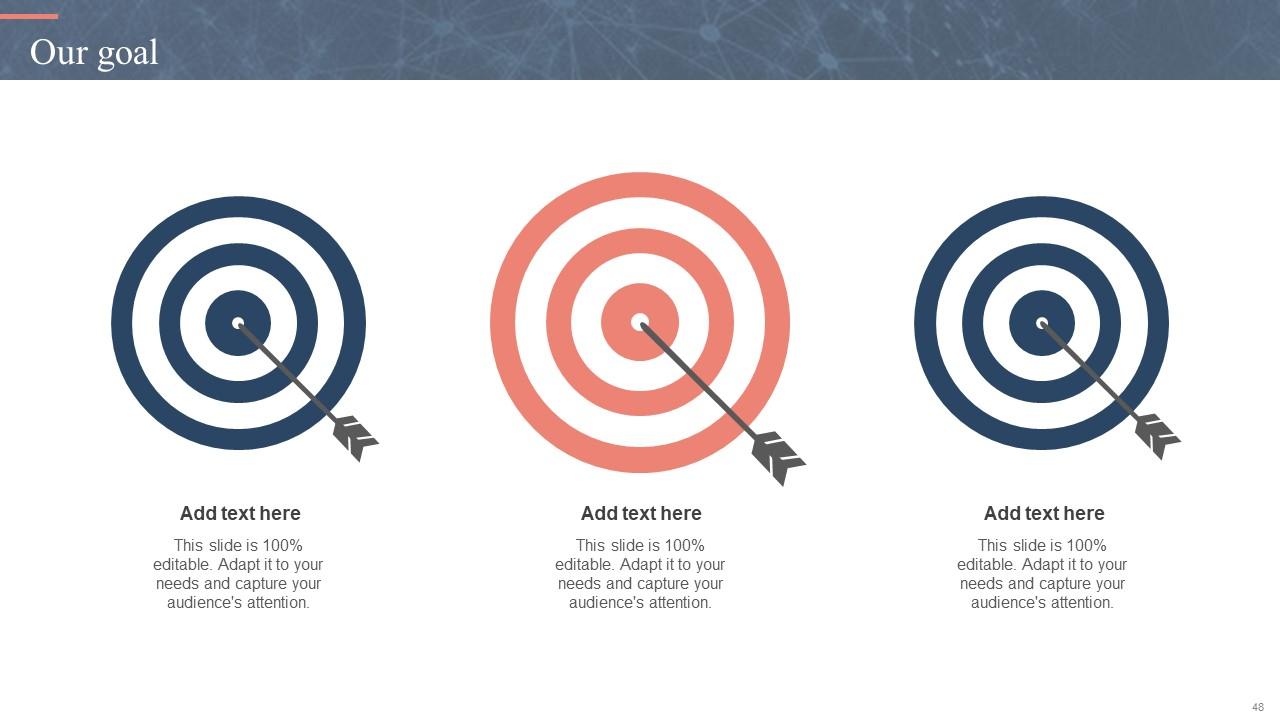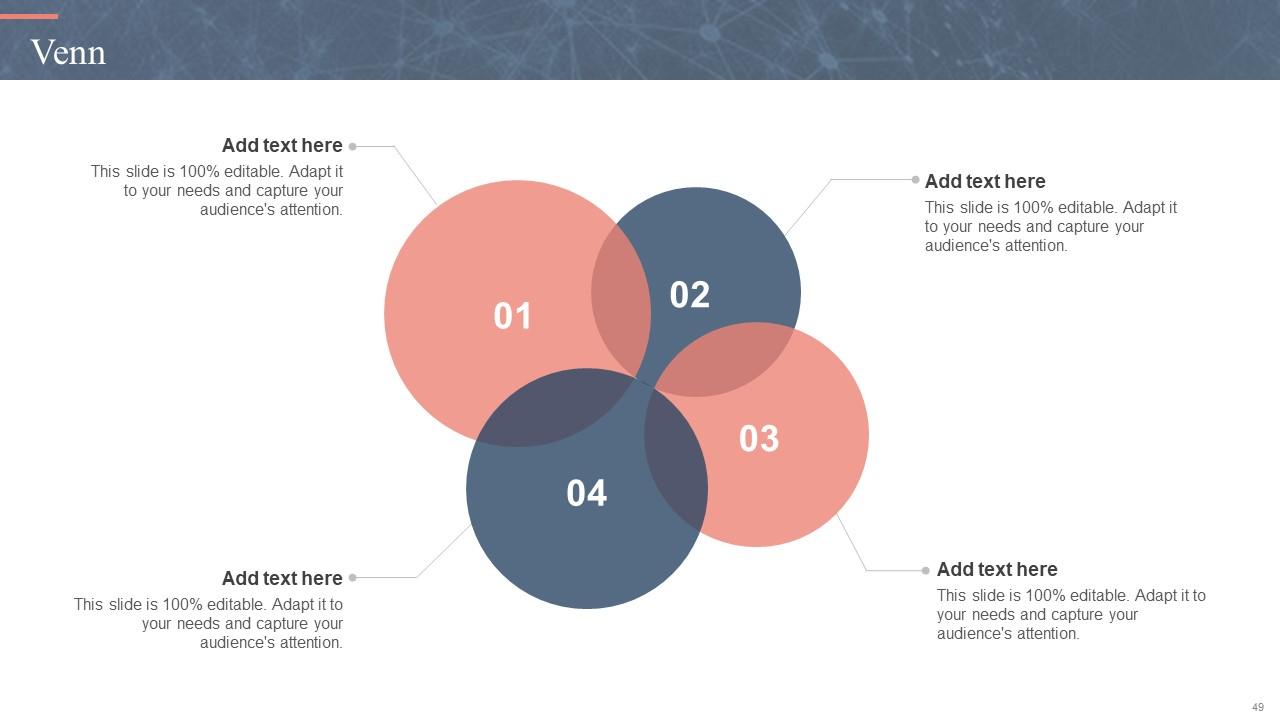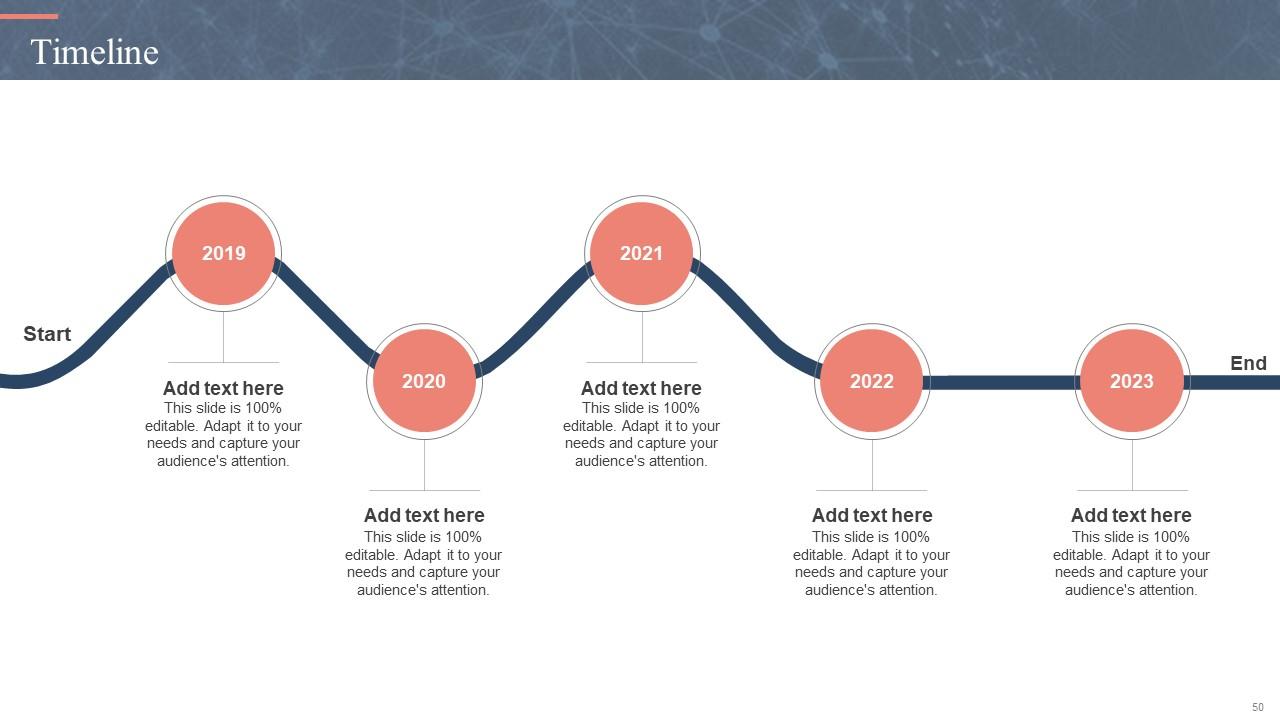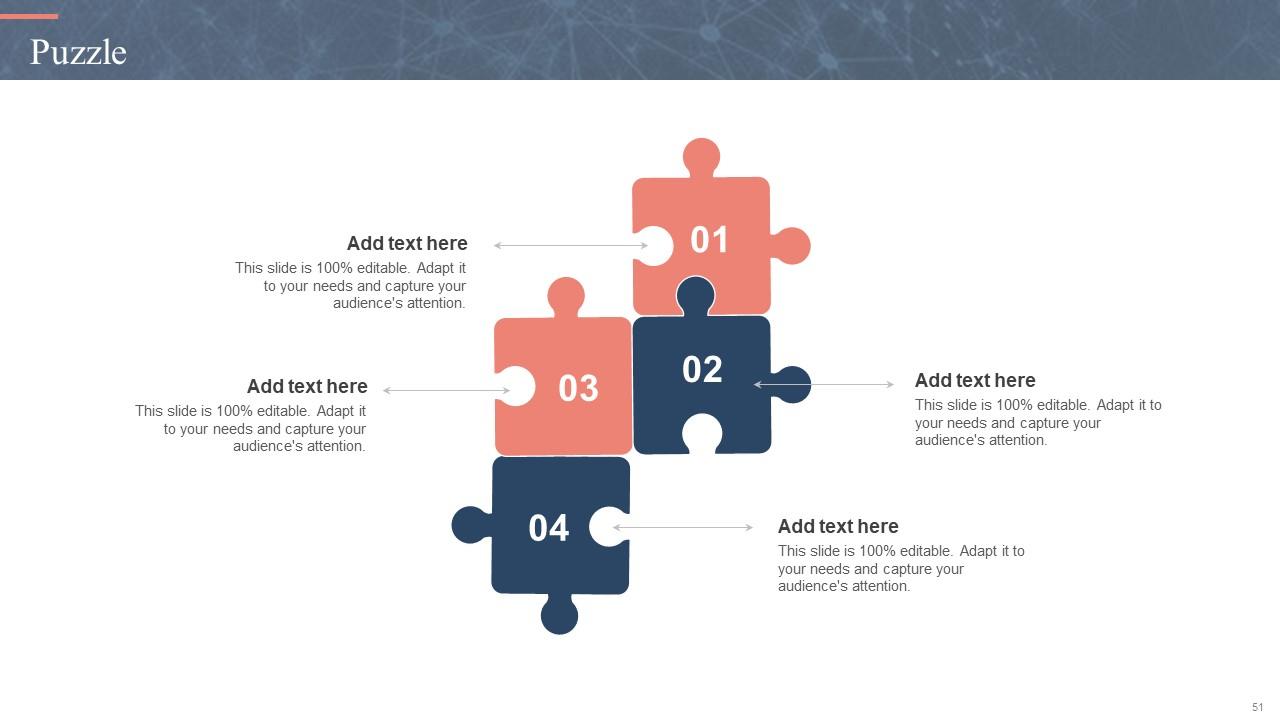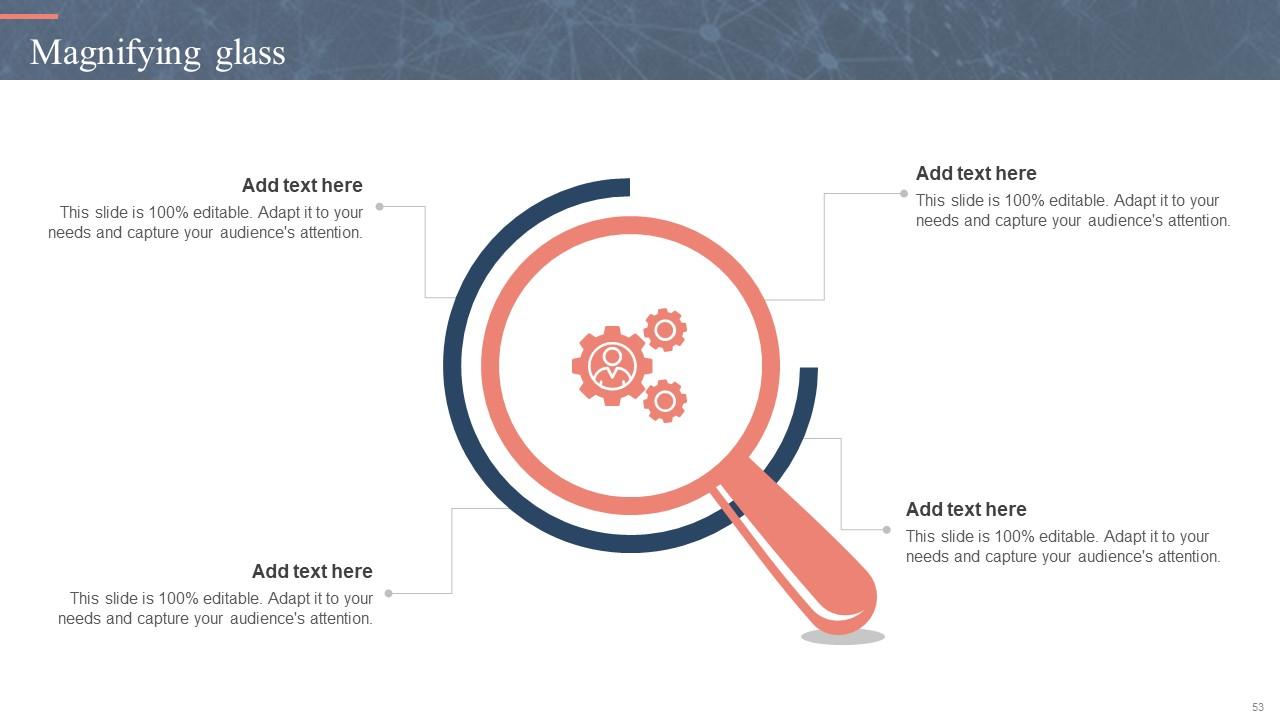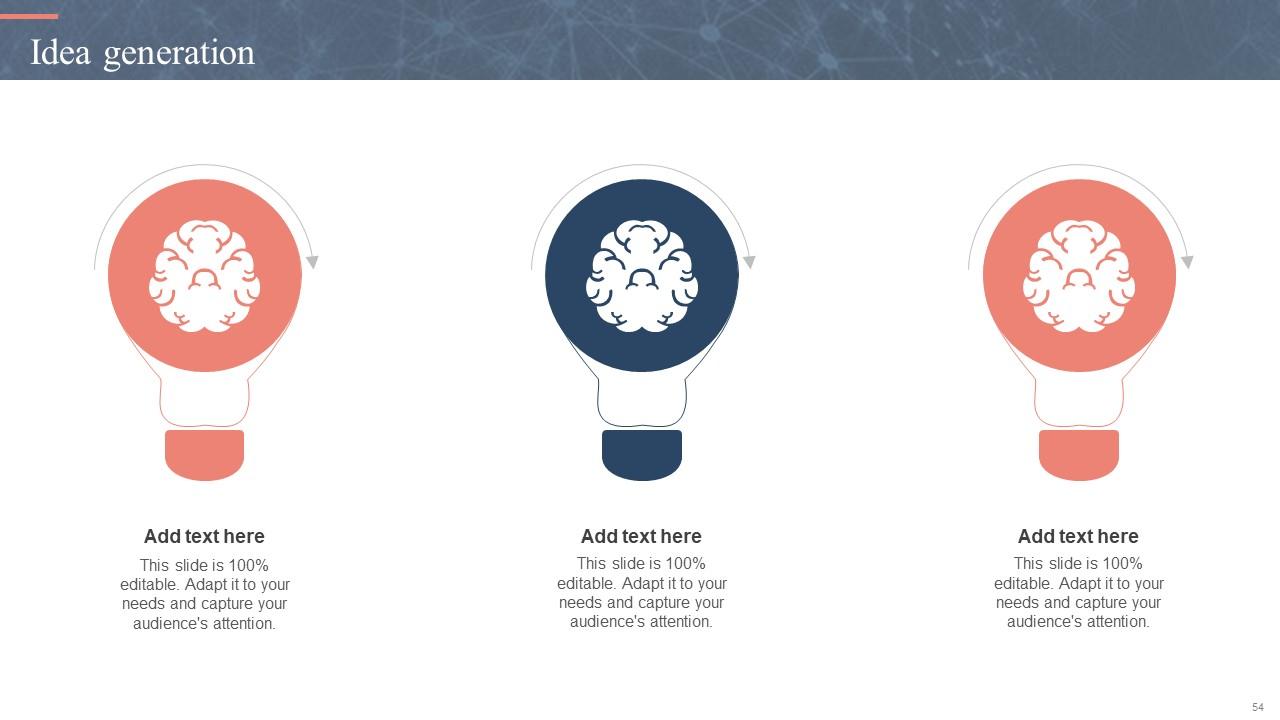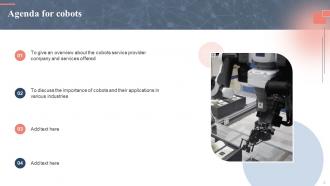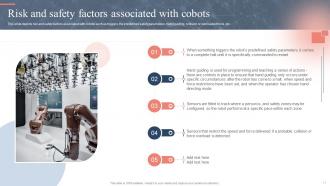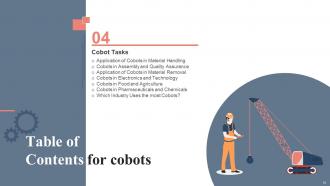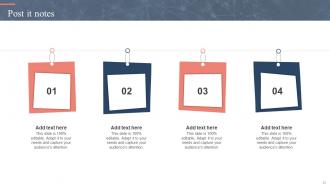Cobots IT Powerpoint Presentation Slides
Cobots provider Company has been in the robots game for longer than just about everyone else in the world, spanning 40 nations and every sector possible. Check out our professionally designed PowerPoint presentation on Cobots IT, which gives a brief idea about the company, the service offered, its importance, reasons to invest in them, and areas where they can add the most value. In this Cobots deck, we have covered the introduction of cobots, including their overview, safety and risk factors, and the benefits of using them. In addition, this Collaborative Robots PPT contains the applications of cobots in different industries, tasks they can perform, services offered by the cobots provider company such as the cobots application builder service, and various types of cobots. Furthermore, this presentation covers the cobots learning section that incorporates the training program for IT teams, training to utilize a cobot fully, comparison between classic industrial robots and cobots. Lastly, this Collaborative Robots deck comprises post-installation outcomes, pricing details, a 30-60-90 days plan, a roadmap for building and installing a robot, and a dashboard to track the performance of a cobot. Get access now.
Cobots provider Company has been in the robots game for longer than just about everyone else in the world, spanning 40 nati..
- Google Slides is a new FREE Presentation software from Google.
- All our content is 100% compatible with Google Slides.
- Just download our designs, and upload them to Google Slides and they will work automatically.
- Amaze your audience with SlideTeam and Google Slides.
-
Want Changes to This PPT Slide? Check out our Presentation Design Services
- WideScreen Aspect ratio is becoming a very popular format. When you download this product, the downloaded ZIP will contain this product in both standard and widescreen format.
-

- Some older products that we have may only be in standard format, but they can easily be converted to widescreen.
- To do this, please open the SlideTeam product in Powerpoint, and go to
- Design ( On the top bar) -> Page Setup -> and select "On-screen Show (16:9)” in the drop down for "Slides Sized for".
- The slide or theme will change to widescreen, and all graphics will adjust automatically. You can similarly convert our content to any other desired screen aspect ratio.
Compatible With Google Slides

Get This In WideScreen
You must be logged in to download this presentation.
PowerPoint presentation slides
Deliver an informational PPT on various topics by using this Cobots IT Powerpoint Presentation Slides. This deck focuses and implements best industry practices, thus providing a birds-eye view of the topic. Encompassed with fifty five slides, designed using high-quality visuals and graphics, this deck is a complete package to use and download. All the slides offered in this deck are subjective to innumerable alterations, thus making you a pro at delivering and educating. You can modify the color of the graphics, background, or anything else as per your needs and requirements. It suits every business vertical because of its adaptable layout.
People who downloaded this PowerPoint presentation also viewed the following :
Content of this Powerpoint Presentation
Slide 1: This sldie introduces Cobots(IT). Commence by stating Your Company Name
Slide 2: This slide depicts the Agenda of the presentation.
Slide 3: This slide contains the Table of contents.
Slide 4: This is yet another slide continuing the Table of contents.
Slide 5: This slide showcases the Title for the Topics to be covered further.
Slide 6: This slide presents an Overview of cobots provider company.
Slide 7: This slide depicts the services offered by the Company.
Slide 8: This slide depicts the organization's representatives team.
Slide 9: This slide elucidates the Heading for the Contents to be covered in the next template.
Slide 10: This slide represents an Overview of collaborative robots or cobots.
Slide 11: This slide displays risk and safety factors associated with cobots.
Slide 12: This slide shows the Benefits of using cobots in business.
Slide 13: This slide highlights the Title for the Contents to be discussed in the next template.
Slide 14: This slide describes the reasons for organizations to invest in cobots.
Slide 15: This slide explains the areas where cobots can add the greatest value.
Slide 16: This slide represents how cobots will make a difference in client companies.
Slide 17: This slide reveals the global statics of collaborative robots.
Slide 18: This slide showcases the Heading for the Ideas to be discussed further.
Slide 19: This slide depicts the usage of cobots in material handling as it is the riskiest task in the manufacturing industry.
Slide 20: This slide shows the application of cobots in the assembly of products and quality assurance during the manufacturing process.
Slide 21: This slide represents the application of cobots in material removal during the manufacturing process.
Slide 22: This slide showcases the use of cobots in electronics and technology and its benefits in the electronic assembly.
Slide 23: This slide describes the application of cobots in the food and agriculture industry.
Slide 24: This slide represents the application of cobots in pharmaceuticals and chemicals.
Slide 25: This slide describes the usage of cobots in different industries.
Slide 26: This slide incorporates the Heading for the Contents to be discussed further.
Slide 27: This slide states the four major types of Collaborative robots.
Slide 28: This slide provides information about the cobot products offered by the Company.
Slide 29: This slide elucidates the cobots application builder service provided by the organization.
Slide 30: This slide contains the Heading for the Topics to be discussed in the upcoming slide.
Slide 31: This slide represents the cobots training program.
Slide 32: This slide represents the training services provided by the company to customers.
Slide 33: This slide elucidates the Title for the Ideas to be covered in the next template.
Slide 34: This slide represents the difference Between classic industrial robots and collaborative robots based on their characteristics.
Slide 35: This slide highlights the Heading for the Contents to be discussed further.
Slide 36: This slide depicts the pricing for cobots building, and installation depending on certain specifications.
Slide 37: This slide exhibits information about the Title for the Ideas to eb covered further.
Slide 38: This slide describes the 30-60-90 days plan for cobot building.
Slide 39: This slide mentions the Title for the Topics to be covered in the forth-coming template.
Slide 40: This slide depicts the roadmap for cobots building and installation.
Slide 41: This slide represents the Heading for the Topics to be discussed next.
Slide 42: This slide outlines the post-installation outcomes of cobots on a company.
Slide 43: This slide covers the Title for the Ideas to be discussed in the forth-coming template.
Slide 44: This slide displays the cobots performance dashboard.
Slide 45: This is the Icons slides containing all the Icons used in the plan.
Slide 46: This slide showcases the Additional information.
Slide 47: This slide depicts the cobots implication for workers.
Slide 48: This is Our goal slide. Highlight your Company goals in this.
Slide 49: This is the Venn diagram slide for showcasing some relevant Company related information.
Slide 50: This slide displays the Organization's Timeline.
Slide 51: This is the Puzzle slide with related imagery.
Slide 52: This slide incorporates the Post it notes for reminders and deadlines.
Slide 53: This slide shows a Magnifying glass for minute details.
Slide 54: This is the Idea generation slide for encouraging fresh ideas.
Slide 55: This is the Thank You slide for acknowledgement.
Cobots IT Powerpoint Presentation Slides with all 60 slides:
Use our Cobots IT Powerpoint Presentation Slides to effectively help you save your valuable time. They are readymade to fit into any presentation structure.
FAQs
Collaborative robots can improve efficiency and productivity, reduce costs, and enhance worker safety. They can also perform repetitive tasks, work alongside humans without the need for safety barriers, and be easily reprogrammed for new tasks.
Collaborative robots can add the greatest value in industries where tasks are repetitive, dangerous, or require high precision. Examples include material handling, assembly, material removal, electronics and technology, food and agriculture, and pharmaceuticals and chemicals.
Safety factors associated with collaborative robots include collision detection, safety-rated stop, speed and separation monitoring, and hand guiding. Other factors include safety-rated soft axes, power and force limiting, and safety-rated monitored stops.
The four main types of collaborative robots are power and force limiting, safety-rated monitored stop, hand guiding, and speed and separation monitoring. Each type is designed to work safely with human operators and has different features to meet specific needs.
Classic industrial robots are designed to work autonomously and require safety barriers to separate them from human operators. Collaborative robots, on the other hand, are designed to work alongside humans and can operate safely without barriers. They are also easier to program and reprogram and are more flexible and adaptable to changing needs.
-
The designs are super attractive. Me and my team love using SlideTeam’s presentations.
-
Wonderful templates design to use in business meetings.




